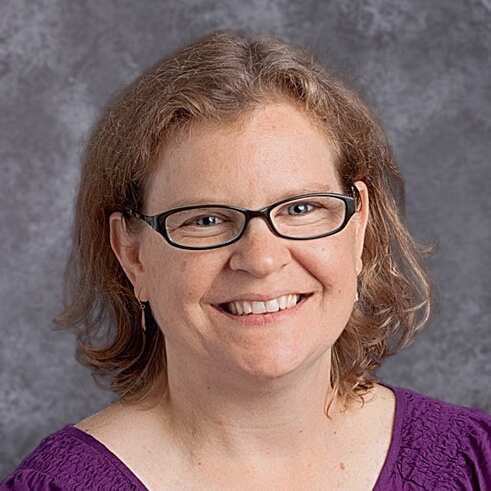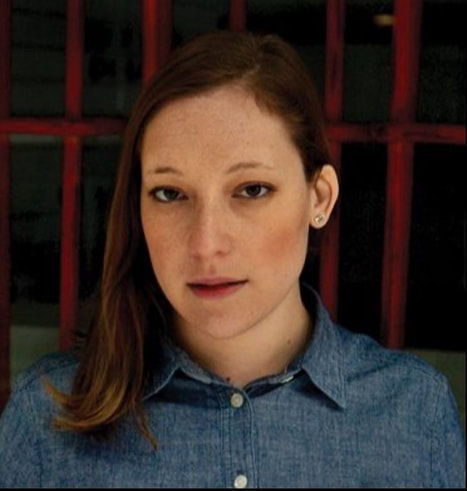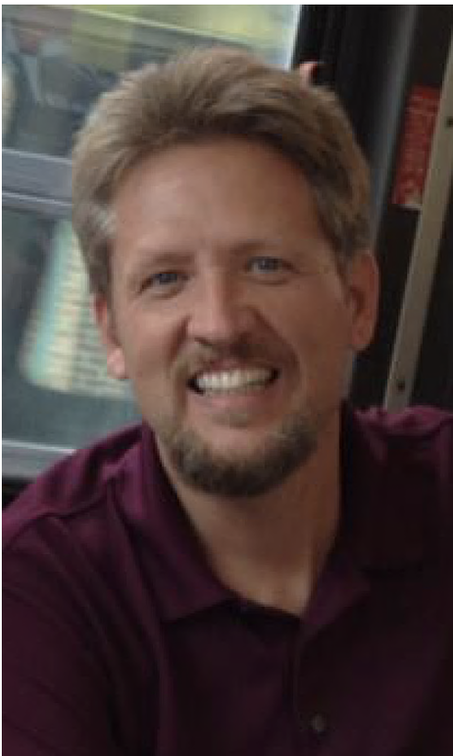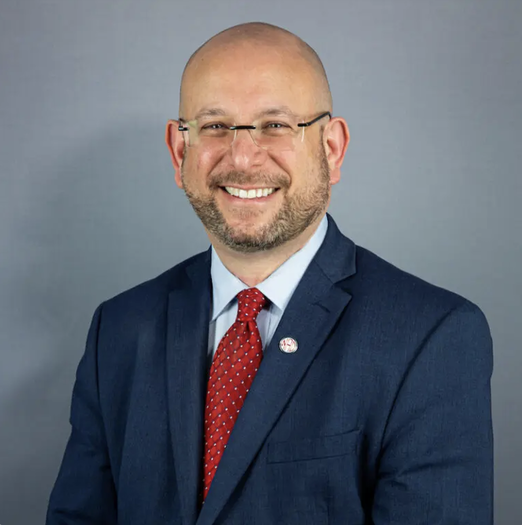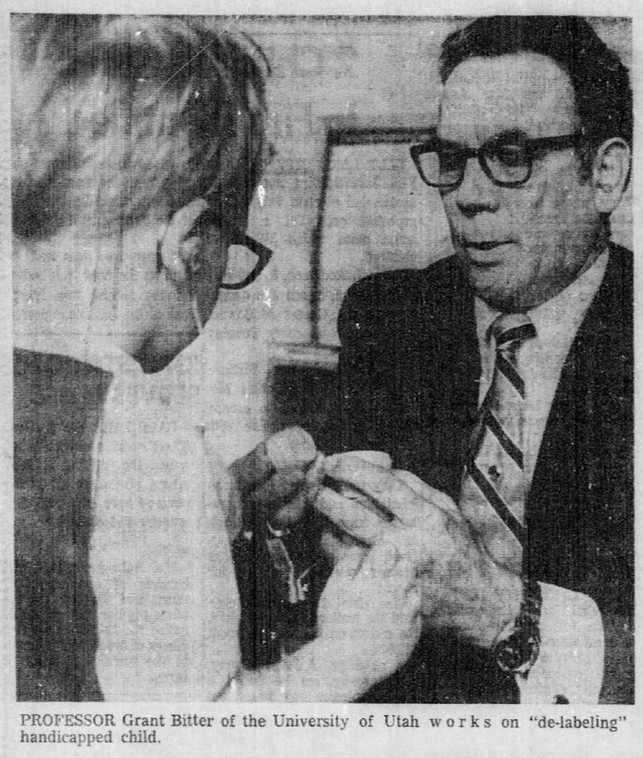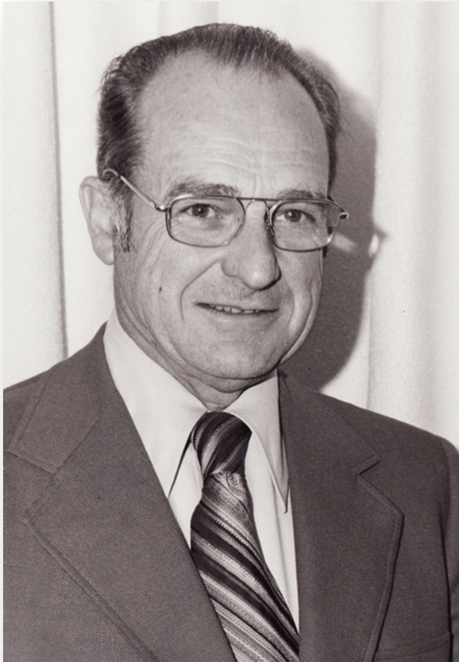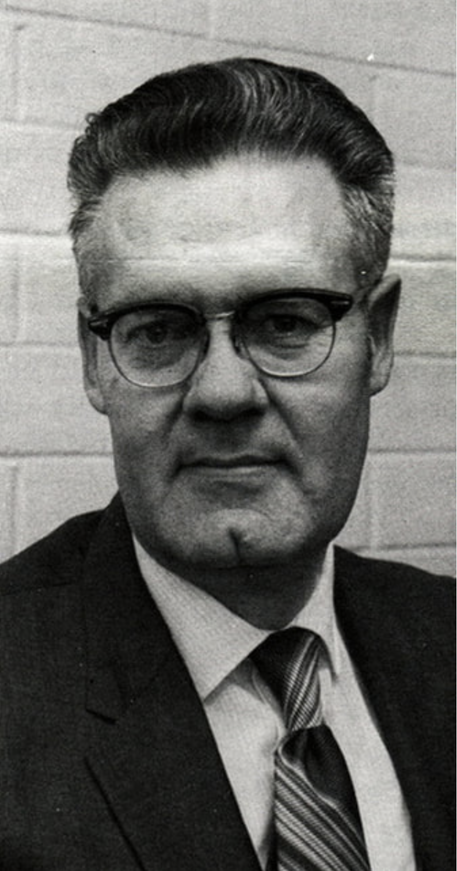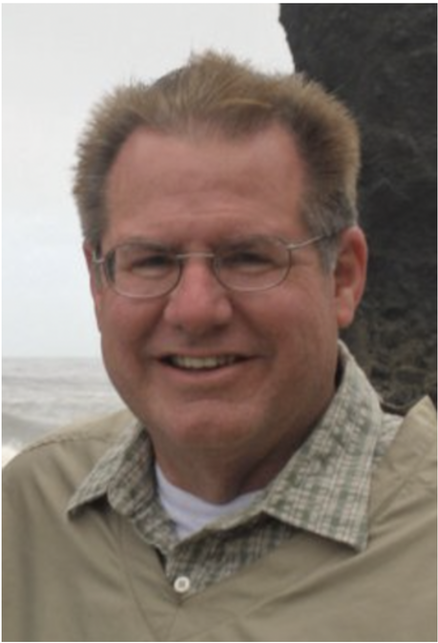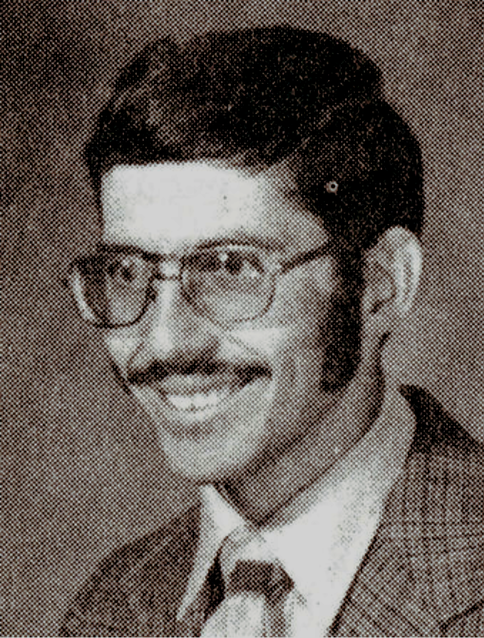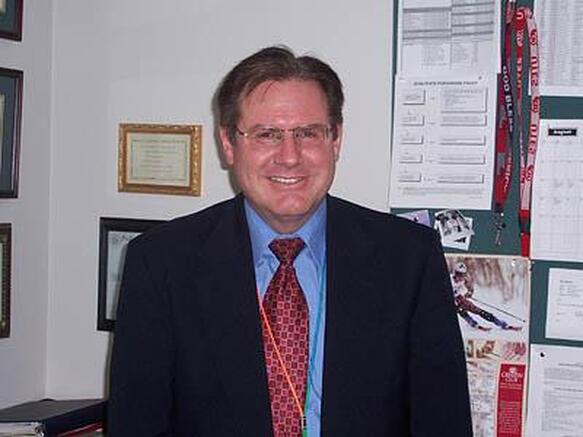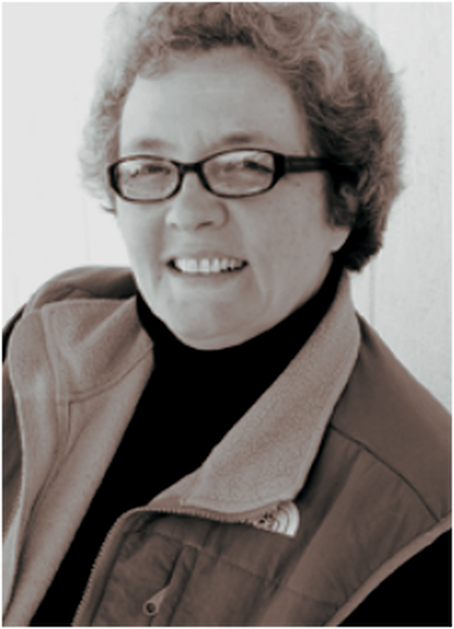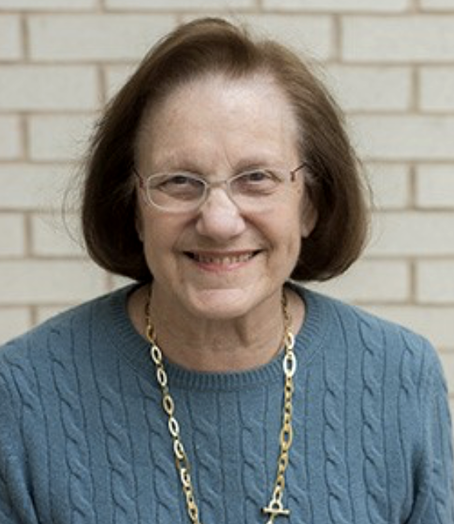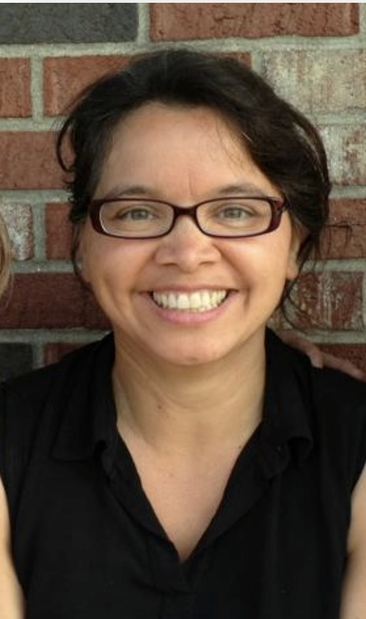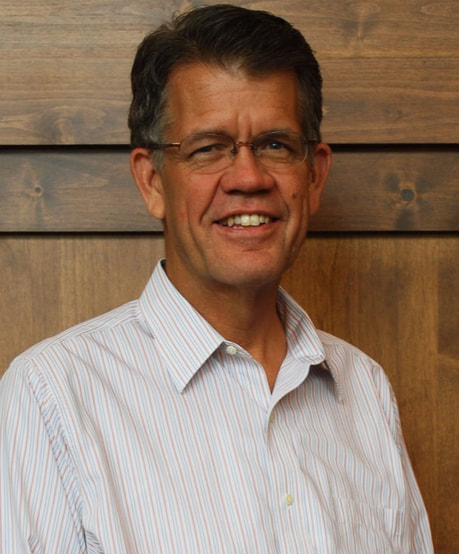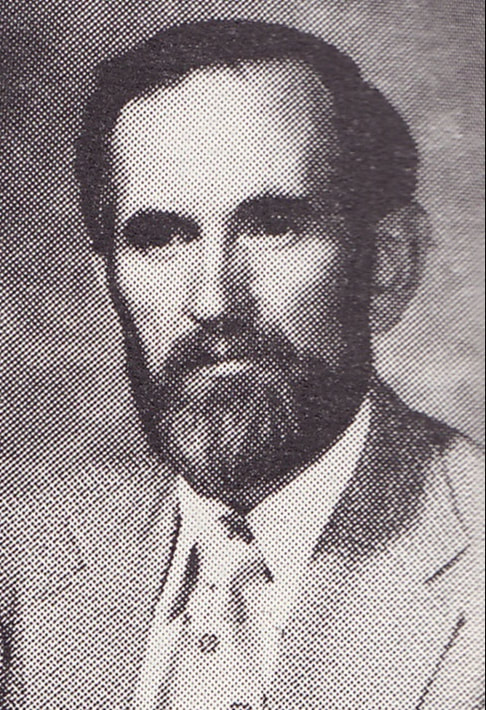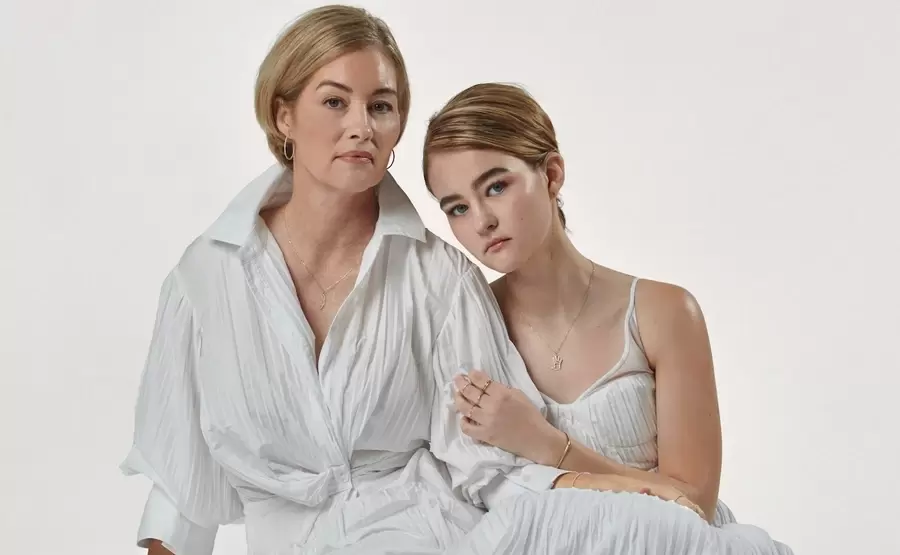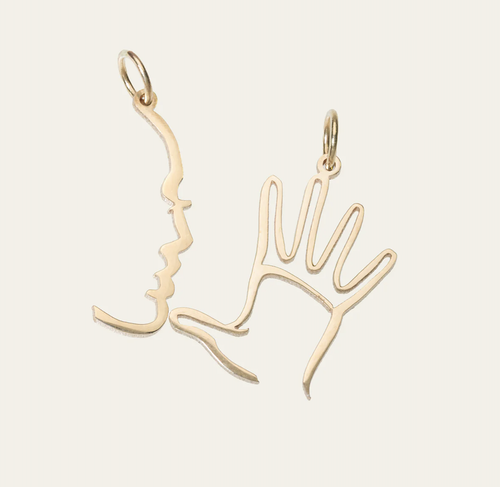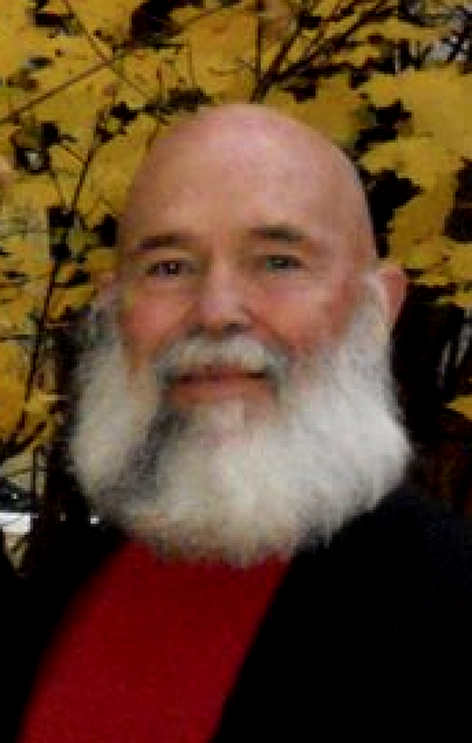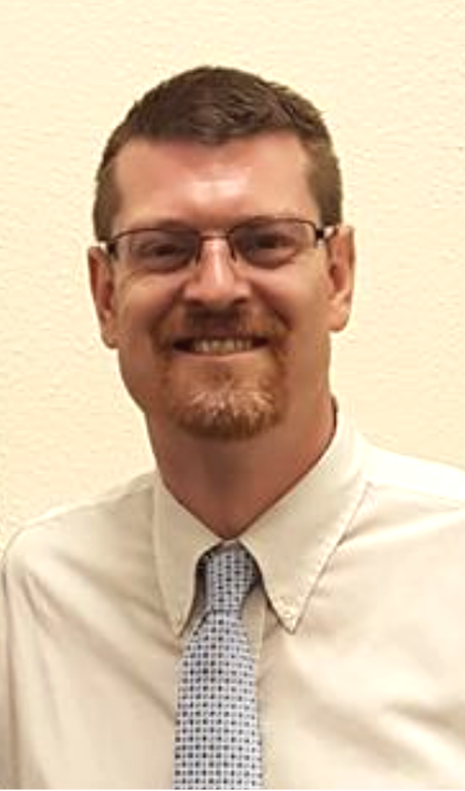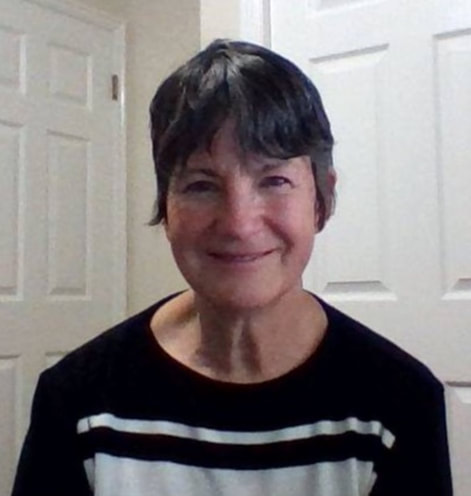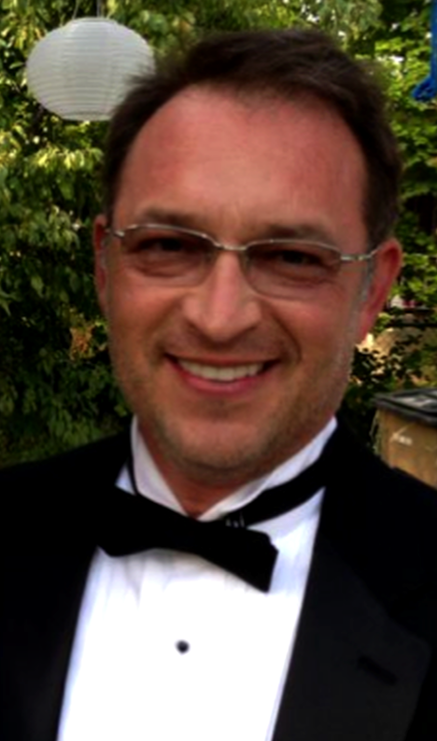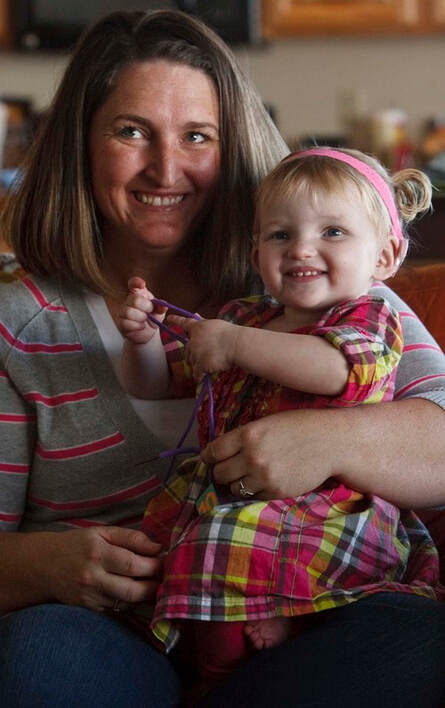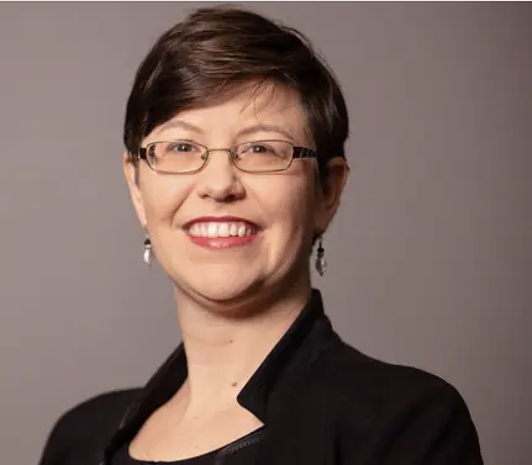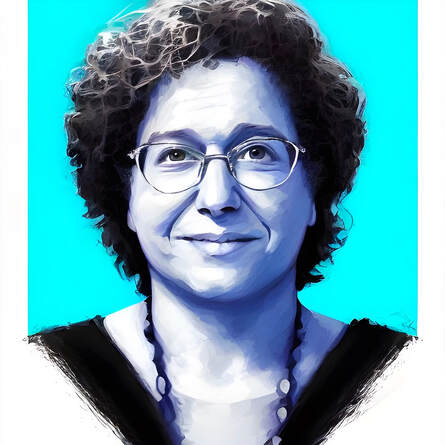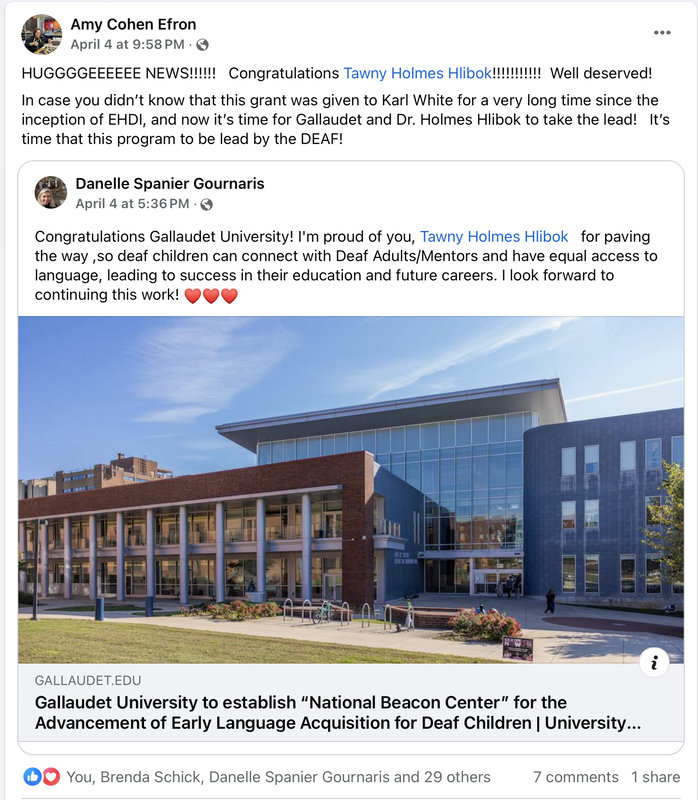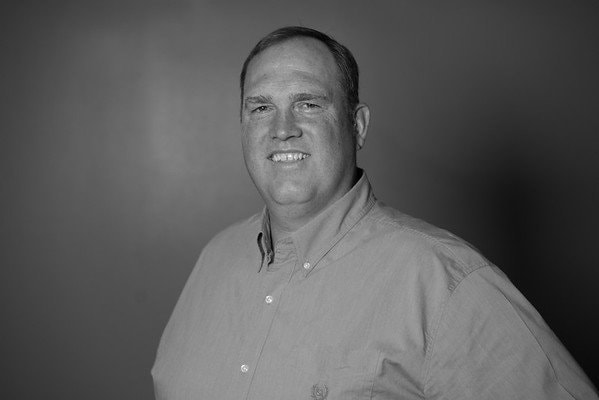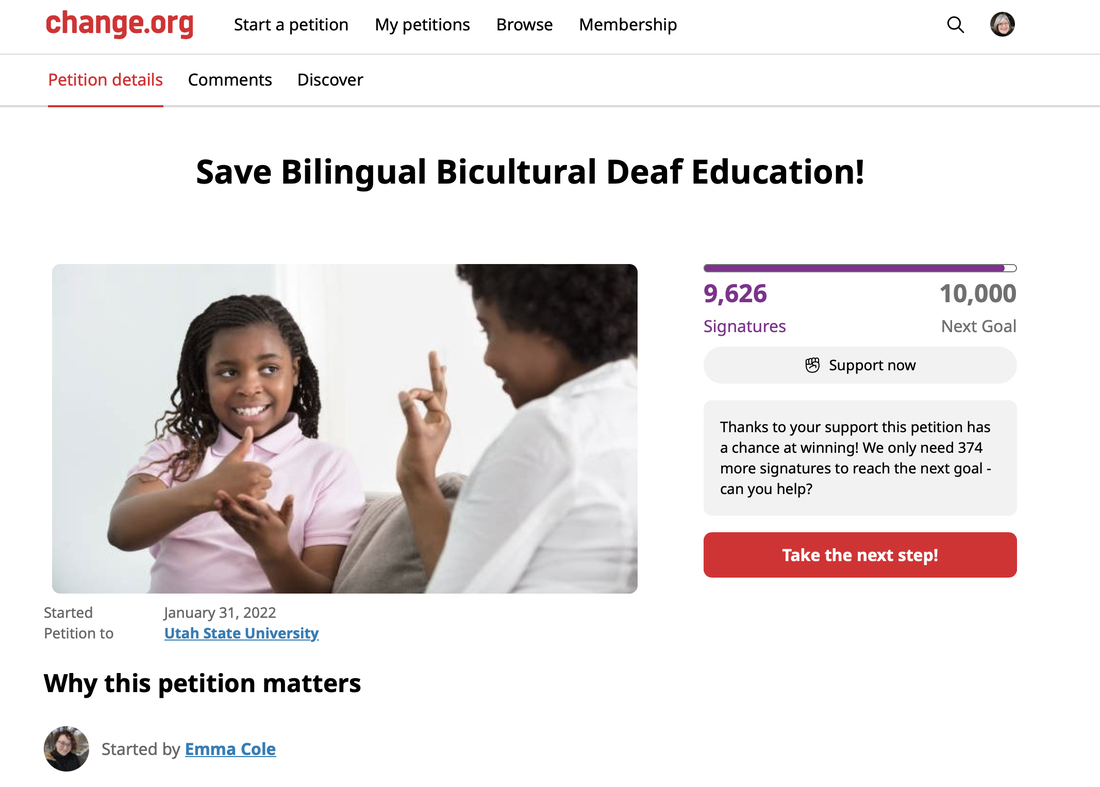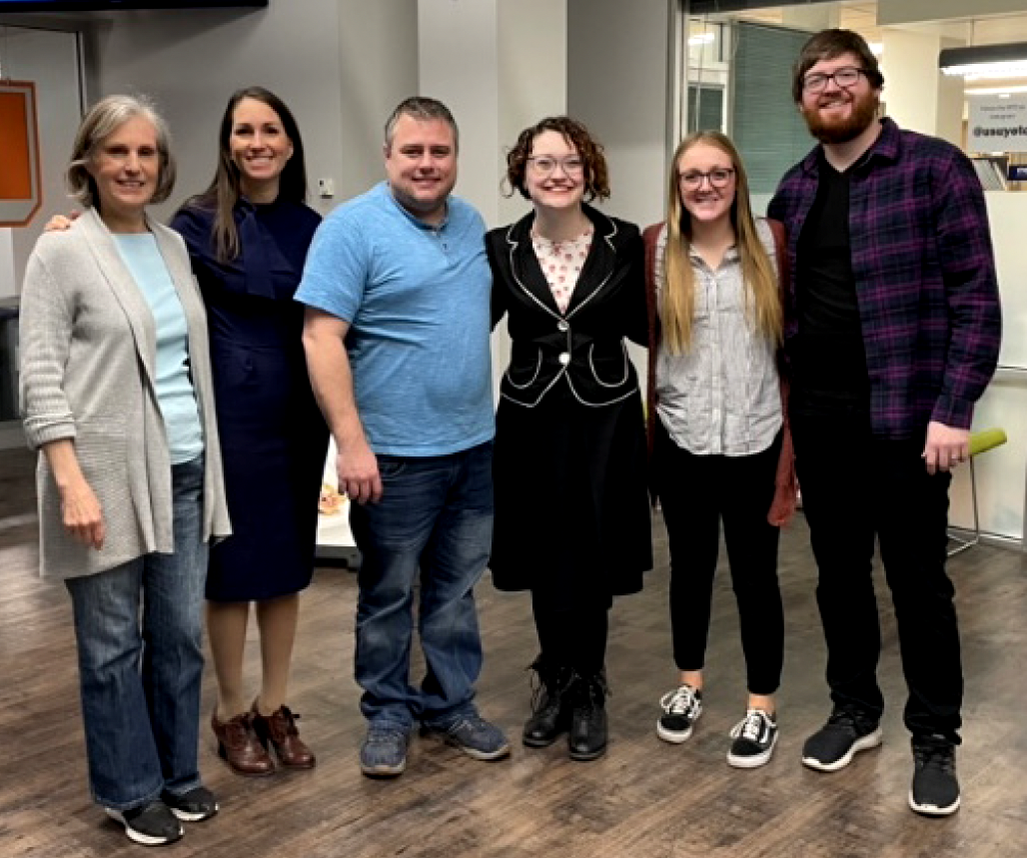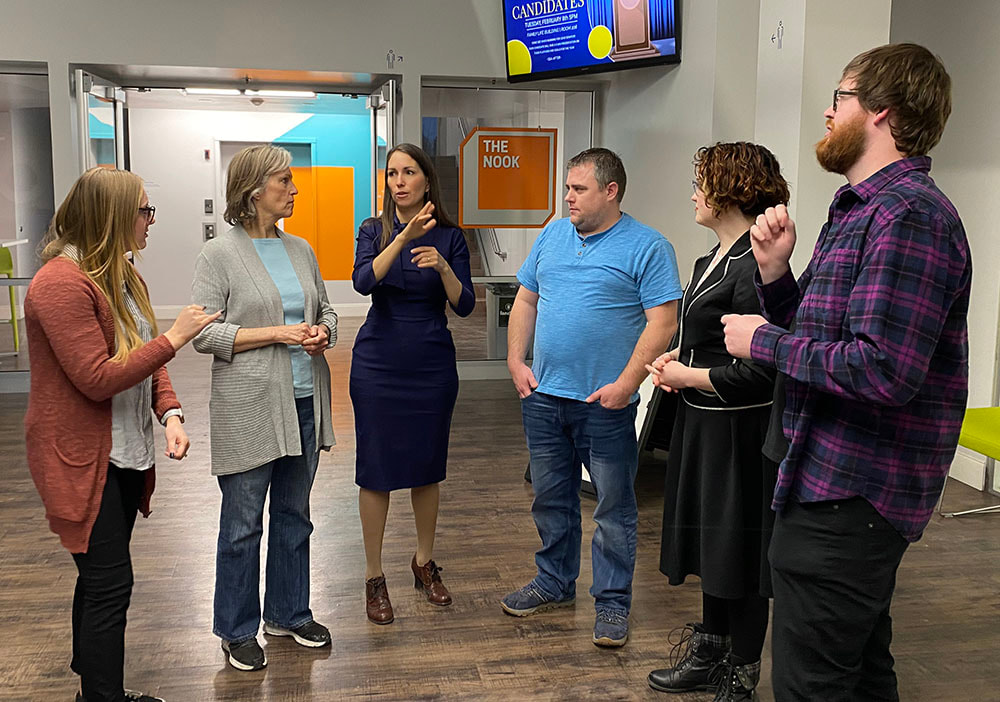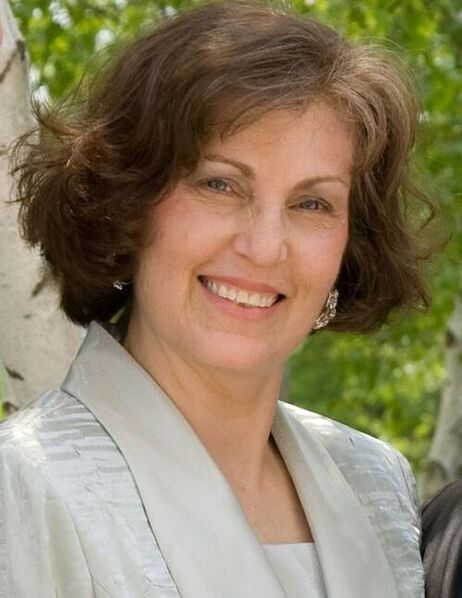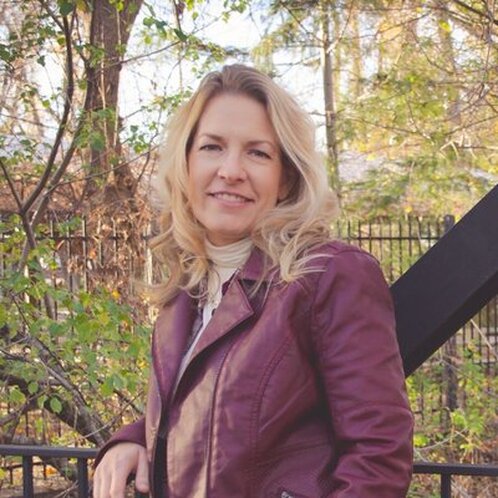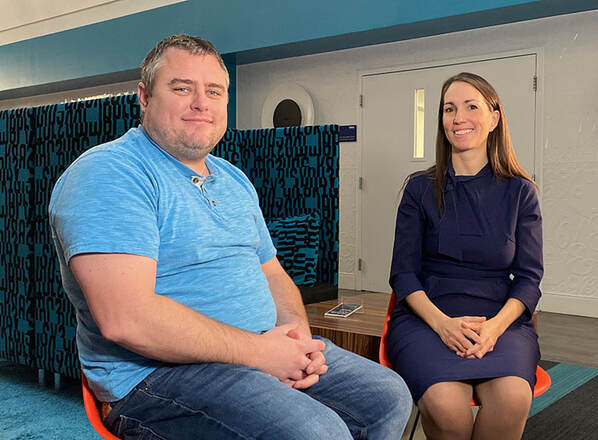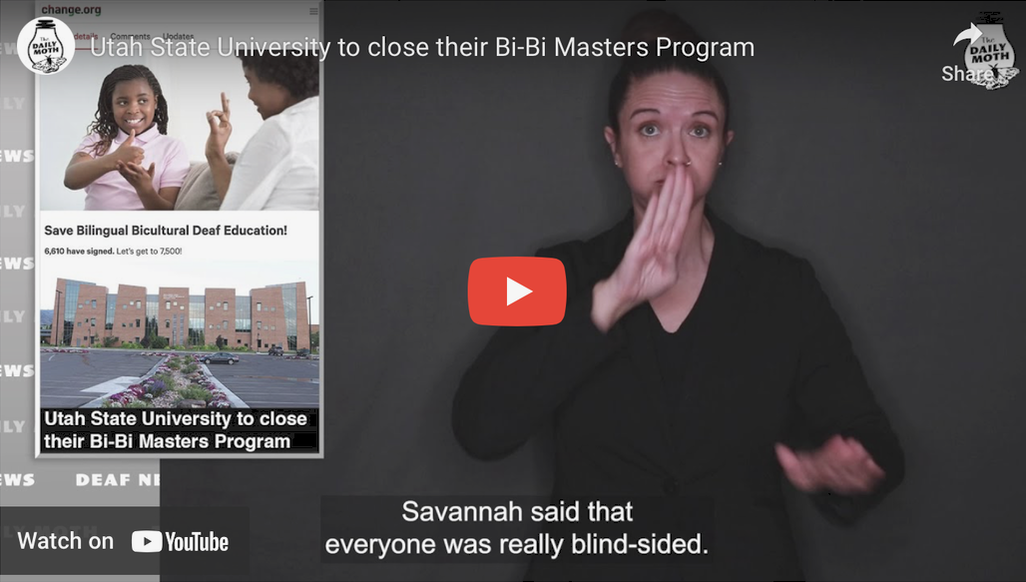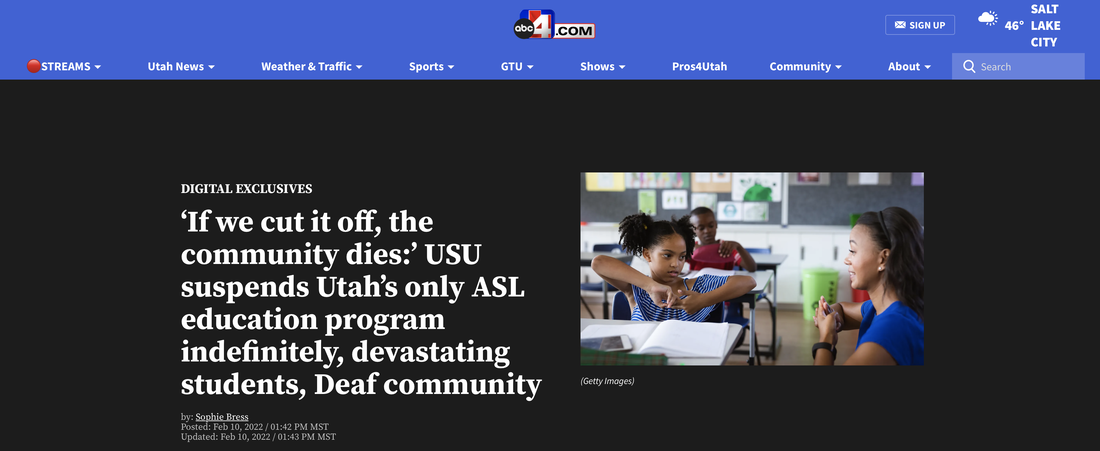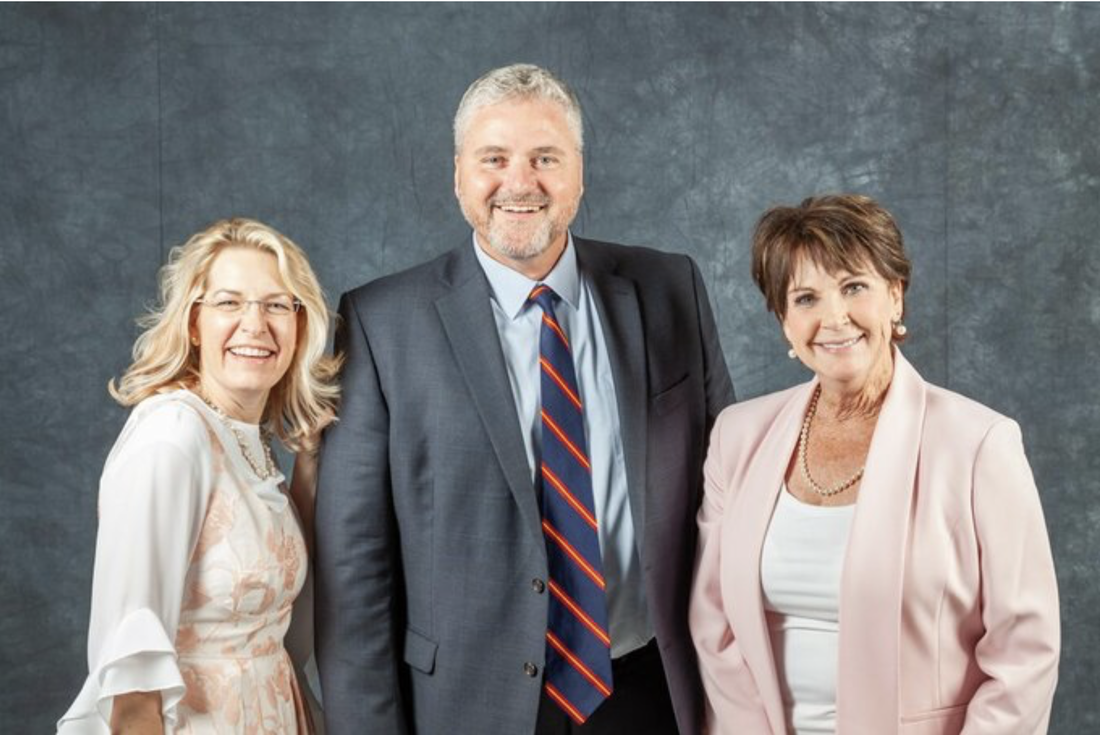The Impact of the Oral Leaders
Within and Outside of Utah
Complied & Written by Jodi Becker Kinner
Edited by Valerie G. Kinney & Bronwyn O’Hara
Published in 2016
Updated in 2024
Edited by Valerie G. Kinney & Bronwyn O’Hara
Published in 2016
Updated in 2024
Author’s Note
As a parent of two Deaf children, my passion for deaf education comes from my personal journey. My father-in-law, Kenneth L. Kinner, also sparked my interest and shared with me the history of deaf education in Utah, including its oral and mainstreaming impact. This inspired me to meticulously document the controversial events of that era. If it weren't for him, I wouldn't be able to advocate for my kids without knowing the history. My studies at the Gallaudet School Social Work Program further deepened my understanding of the complexities of education, legislation, and policy. Moreover, my role on the Institutional Council of the Utah Schools for the Deaf and Blind has truly empowered me to advocate for my children and others in Utah who are Deaf, Hard of Hearing, DeafBlind, and DeafDisabled. This platform has given me the strength and voice to make a difference.
The Utah Schools for the Deaf and Blind is a state school that promotes inclusivity by serving a diverse student population of Deaf, Hard of Hearing, Blind, Low Vision, DeafBlind, and DeafDisabled individuals. When we discuss deaf education, we will primarily refer to the 'Utah School for the Deaf.' On the other hand, when we talk about the entire state school, we will use the term "Utah Schools for the Deaf and the Blind."
In the 1960s and 1970s, the Utah School for the Deaf underwent significant changes. The dual-track program and the two-track program, divided into an oral department and a sign language department, significantly impacted the lives of Deaf students and their families. To avoid confusion, we refer to the "dual-track program" from the 1960s and the "two-track program" from the 1970s on our education webpages. These programs will help us understand how these changes have affected students, teachers, administrators, and the Utah Association for the Deaf.
The "Deaf Education in Utah" webpages contain repetitive and overlapping sections, similar to those on other education webpages. The introductions to each section are also similar, and they will directly get to the point of the webpage's topic.
When writing about individuals for our history website, I choose to use their first name to acknowledge all individuals who contribute to and advocate for our community's causes. Our patriarchal culture often expects to recognize women's advocacy, contributions, and achievements using their husbands' last names instead of their own. However, in the spirit of inclusivity, equality, and recognizing each individual's unique identity, I have decided to use their first names throughout the website. This decision reaffirms our commitment to these values and highlights the significant role of women's advocacy in our community.
Our organization, previously known as the Utah Association for the Deaf, changed its name to the Utah Association of the Deaf in 2012. The association was known as the Utah Association of the Deaf from 1909 to 1962. The association changed its name to the Utah Association for the Deaf in 1963. Finally, in 2012, the association reverted to its previous name, the Utah Association of the Deaf. When writing the history website, I use both "of" and "for" to reflect the different eras of the association's history.
As someone deeply committed to advocating for ASL/English bilingual education in Utah, I have witnessed firsthand the tremendous impact of a growing oral education environment and the role of steadfast oral advocates, particularly Steven W. Noyce, Superintendent of the Utah Schools for the Deaf and the Blind, as well as others with Dr. Grant B. Bitter and Dr. Karl R. White. It had become increasingly clear that change was necessary to provide an equal deaf educational system in ASL/English bilingual and listening and spoken language. In the Deaf community, we have been grappling with the influence of three prominent oral advocates—Dr. Grant B. Bitter, Steven W. Noyce, and Dr. Karl R. White—in our backyard, who have wielded significant power over deaf education, both within the state and nation, as explained on this webpage.
Thank you for your interest in the 'Deaf Education History in Utah' webpage of this website. Your engagement is invaluable to our mission to educate and advocate for the Deaf community and its history in Utah.
Enjoy!
Jodi Becker Kinner
The Utah Schools for the Deaf and Blind is a state school that promotes inclusivity by serving a diverse student population of Deaf, Hard of Hearing, Blind, Low Vision, DeafBlind, and DeafDisabled individuals. When we discuss deaf education, we will primarily refer to the 'Utah School for the Deaf.' On the other hand, when we talk about the entire state school, we will use the term "Utah Schools for the Deaf and the Blind."
In the 1960s and 1970s, the Utah School for the Deaf underwent significant changes. The dual-track program and the two-track program, divided into an oral department and a sign language department, significantly impacted the lives of Deaf students and their families. To avoid confusion, we refer to the "dual-track program" from the 1960s and the "two-track program" from the 1970s on our education webpages. These programs will help us understand how these changes have affected students, teachers, administrators, and the Utah Association for the Deaf.
The "Deaf Education in Utah" webpages contain repetitive and overlapping sections, similar to those on other education webpages. The introductions to each section are also similar, and they will directly get to the point of the webpage's topic.
When writing about individuals for our history website, I choose to use their first name to acknowledge all individuals who contribute to and advocate for our community's causes. Our patriarchal culture often expects to recognize women's advocacy, contributions, and achievements using their husbands' last names instead of their own. However, in the spirit of inclusivity, equality, and recognizing each individual's unique identity, I have decided to use their first names throughout the website. This decision reaffirms our commitment to these values and highlights the significant role of women's advocacy in our community.
Our organization, previously known as the Utah Association for the Deaf, changed its name to the Utah Association of the Deaf in 2012. The association was known as the Utah Association of the Deaf from 1909 to 1962. The association changed its name to the Utah Association for the Deaf in 1963. Finally, in 2012, the association reverted to its previous name, the Utah Association of the Deaf. When writing the history website, I use both "of" and "for" to reflect the different eras of the association's history.
As someone deeply committed to advocating for ASL/English bilingual education in Utah, I have witnessed firsthand the tremendous impact of a growing oral education environment and the role of steadfast oral advocates, particularly Steven W. Noyce, Superintendent of the Utah Schools for the Deaf and the Blind, as well as others with Dr. Grant B. Bitter and Dr. Karl R. White. It had become increasingly clear that change was necessary to provide an equal deaf educational system in ASL/English bilingual and listening and spoken language. In the Deaf community, we have been grappling with the influence of three prominent oral advocates—Dr. Grant B. Bitter, Steven W. Noyce, and Dr. Karl R. White—in our backyard, who have wielded significant power over deaf education, both within the state and nation, as explained on this webpage.
Thank you for your interest in the 'Deaf Education History in Utah' webpage of this website. Your engagement is invaluable to our mission to educate and advocate for the Deaf community and its history in Utah.
Enjoy!
Jodi Becker Kinner
Acknowledgment
When Steven W. Noyce became superintendent of the Utah Schools for the Deaf and Blind in 2009, his support for oral and mainstream education raised concerns within the Utah Deaf community. As a parent of Deaf children, I was worried that Steven Noyce would carry Dr. Grant B. Bitter's legacy by promoting oral education and mainstreaming all Deaf children in Utah. On November 3, 2009, I raised this issue with him and Associate Superintendent Jennifer Howell. I knew that Steven, a former student of Dr. Bitter's Oral Training Program at the University of Utah and a long-time employee at the Utah School for the Deaf, was fully aware of the controversy between oral and sign language. To protect the ASL/English bilingual program, I detailed Dr. Grant B. Bitter's controversial history of oral and mainstreaming advocacy, as well as the profound impact of the dual-track and two-track programs at the Utah School for the Deaf. I recommended providing an equal balance between the Listening and Spoken Language and ASL/English bilingual options for families of Deaf children. I also requested preventive measures to avoid the recurrence of similar issues. Steven acknowledged the accuracy of the information and said, "This is the most accurate paper I have ever read." This recognition of the paper's credibility underscores the importance of our advocacy efforts. I owe a debt of gratitude to my father-in-law, Kenneth L. Kinner, for sharing this critical history with me. His insights and knowledge have proven invaluable in our advocacy efforts for deaf education. Without his help, we couldn't have opposed the oral agenda.
Thank you, Ken!
Jodi Becker Kinner
Thank you, Ken!
Jodi Becker Kinner
The Impact of
the Utah Oral Leaders
the Utah Oral Leaders
Over the years, the Utah Deaf community has shown incredible resilience in the face of opposition from three prominent oral advocates in Utah: Dr. Grant B. Bitter, Steven W. Noyce, and Dr. Karl R. White. The Utah Oral Advocates for Listening and Spoken Language (LSL-replaced oral) consistently praised the Utah School for the Deaf as a national model. They highlight the school's provision of both listening & spoken language and ASL/English bilingual (replaced total communication) programs, known as the dual-track program (1960s) and two-track program (1970s), as well as the school's outreach services to promote mainstreaming efforts. However, the Utah Deaf community, under the leadership of the Utah Deaf Education Core Group, recognized the ineffectiveness of this system and actively advocated for and safeguarded the ASL/English bilingual program.
Superintendent Noyce proposed the two-track program as a model for other state schools for the deaf nationwide in an article titled "Schools for the Deaf Grapple with Balancing Two Tracks," which was published in The Salt Lake Tribune on February 21, 2011. The program aimed at offering the Listening & Spoken Language and ASL/English bilingual tracks to empower parents to make choices for their Deaf children. However, the Utah Deaf Education Core Group, a group of concerned parents and members of the Utah Deaf community, saw this as an attempt to decrease the ASL/English bilingual Program and steer more Deaf and hard of hearing children into the LSL Program. This situation was a cause for concern, as other state schools, such as the South Dakota School for the Deaf, the Delaware School for the Deaf, and the Indiana School for the Deaf, also faced the threat of losing their ASL/English bilingual programs due to similar issues.
Superintendent Noyce proposed the two-track program as a model for other state schools for the deaf nationwide in an article titled "Schools for the Deaf Grapple with Balancing Two Tracks," which was published in The Salt Lake Tribune on February 21, 2011. The program aimed at offering the Listening & Spoken Language and ASL/English bilingual tracks to empower parents to make choices for their Deaf children. However, the Utah Deaf Education Core Group, a group of concerned parents and members of the Utah Deaf community, saw this as an attempt to decrease the ASL/English bilingual Program and steer more Deaf and hard of hearing children into the LSL Program. This situation was a cause for concern, as other state schools, such as the South Dakota School for the Deaf, the Delaware School for the Deaf, and the Indiana School for the Deaf, also faced the threat of losing their ASL/English bilingual programs due to similar issues.
On June 6, 2011, Timothy Chevalier, a former ASL/English Bilingual Specialist, shared that the South Dakota School for the Deaf was likely the first state school to copy the Utah School for the Deaf's two-track program and its outreach services model in 2005 after visiting and consulting with them. The two-track program, as applied at SDSD, divided students into Listening and Spoken Language and ASL/English bilingual programs. The school prohibited LSL students with cochlear implants from interacting with students in the ASL/English bilingual program at any time, including recess and lunch. The school also avoided exposing the LSL students to sign language (Timothy Chevalier, personal communication, June 6, 2011).
To promote mainstreaming, the administration of SDSD has also collaborated with public schools to revise their practices to integrate LSL students who are Deaf and hard of hearing into the LSL Program with non-deaf students in public schools. The goal was to help these students learn to listen and speak more effectively. In 2007, some South Dakota families who were supporters of ASL opposed the new system, but their efforts were unsuccessful. Consequently, they had to make the difficult decision to move out of the state to enroll their Deaf children in other state schools for the deaf. By 2009, the South Dakota School for the Deaf no longer existed as a school. Instead, it provided outreach services to students in the public school system (Timothy Chevalier, personal communication, June 6, 2011).
Two More State Schools for the Deaf
Impacted by the Oralism Movement
Impacted by the Oralism Movement
This situation was not unique to the South Dakota School for the Deaf. Theresa Bulger also led the Oral Only Option Schools Group (OOOS) in an attempt to replicate the Utah School for the Deaf's two-track model and its outreach services. The Alexander Graham Bell Association supported their efforts and actively promoted the LSL option in several states. In 2010, Dr. Karl R. White, a prominent Utah LSL program advocate, testified before the California Legislature to advocate for AD 2072 passage. Despite Dr. White's efforts, California Governor Arnold Schwarzenegger vetoed the bill in response to a significant outcry from the California Deaf community.
Like the South Dakota School for the Deaf, in 2011, Delaware and Indiana also worked to make Listening & Spoken language (LSL) a legal option for Deaf children in their state schools for the deaf. Indiana succeeded in their mission. Superintendent Noyce enthusiastically shared at the Utah State Office of Education's Deaf National Agenda Committee meeting that Indiana Governor Mitch Daniels sought his advice on implementing the two-track program and outreach services provided by the Utah School for the Deaf during the Indiana Deaf community's protest. Superintendent Noyce further stated that the Illinois School for the Deaf and the New Jersey School for the Deaf will follow in the footsteps of the Indiana School for the Deaf by adopting the Utah School for the Deaf's delivery services model (Steven W. Noyce, personal communication, March 12, 2010). On top of that, the Delaware School for the Deaf, which provides bilingual education in American Sign Language and English, was pressured to offer the LSL option by the LSL-promoting CHOICES Delaware organization, created in 2009. Fortunately, on September 10, 2010, Delaware Governor Jack Markell signed House Bill 283, the Delaware Hard of Hearing Children's Bill of Rights, into law to safeguard ASL/English bilingual education. Texas, Colorado, and California have also implemented similar legislation (www.christina.k12.de.us/DSPDHH/DHHBillofRights.htm).
One year later, on July 12, 2011, the CHOICES Delaware organization attempted to create a listening and spoken Llanguage program in the Delaware School for the Deaf and Statewide Programs for the Deaf and Hard of Hearing. However, their attempt was unsuccessful, as stated in the CHOICES Delaware Position Paper. Ursula Schultz, a former deaf employee at the Delaware School for the Deaf, reported that the CHOICES Delaware organization was pushing for the implementation of listening and spoken language educational practices based on AGBell's principles for LSL in their early childhood classes. They believed all children with hearing aids or cochlear implants only need LSL. The group has been actively lobbying state officials to make these changes happen (Ursula Schultz, personal communication, February 12, 2012).
Like the South Dakota School for the Deaf, in 2011, Delaware and Indiana also worked to make Listening & Spoken language (LSL) a legal option for Deaf children in their state schools for the deaf. Indiana succeeded in their mission. Superintendent Noyce enthusiastically shared at the Utah State Office of Education's Deaf National Agenda Committee meeting that Indiana Governor Mitch Daniels sought his advice on implementing the two-track program and outreach services provided by the Utah School for the Deaf during the Indiana Deaf community's protest. Superintendent Noyce further stated that the Illinois School for the Deaf and the New Jersey School for the Deaf will follow in the footsteps of the Indiana School for the Deaf by adopting the Utah School for the Deaf's delivery services model (Steven W. Noyce, personal communication, March 12, 2010). On top of that, the Delaware School for the Deaf, which provides bilingual education in American Sign Language and English, was pressured to offer the LSL option by the LSL-promoting CHOICES Delaware organization, created in 2009. Fortunately, on September 10, 2010, Delaware Governor Jack Markell signed House Bill 283, the Delaware Hard of Hearing Children's Bill of Rights, into law to safeguard ASL/English bilingual education. Texas, Colorado, and California have also implemented similar legislation (www.christina.k12.de.us/DSPDHH/DHHBillofRights.htm).
One year later, on July 12, 2011, the CHOICES Delaware organization attempted to create a listening and spoken Llanguage program in the Delaware School for the Deaf and Statewide Programs for the Deaf and Hard of Hearing. However, their attempt was unsuccessful, as stated in the CHOICES Delaware Position Paper. Ursula Schultz, a former deaf employee at the Delaware School for the Deaf, reported that the CHOICES Delaware organization was pushing for the implementation of listening and spoken language educational practices based on AGBell's principles for LSL in their early childhood classes. They believed all children with hearing aids or cochlear implants only need LSL. The group has been actively lobbying state officials to make these changes happen (Ursula Schultz, personal communication, February 12, 2012).
The CHOICES Delaware organization advocated for speech and auditory therapy services for Deaf and hard of hearing students, particularly those with hearing parents. They argued that such therapy was essential for the student's overall development. While they recognized the value of ASL/English bilingual educational programs for Deaf and hard of hearing children of Deaf parents, they believed that not all hearing families received speech and auditory services, making it essential to advocate for such services. The administration of Delaware School for the Deaf supported the ASL/English bilingual program, which did not sit well with the CHOICES Delaware organization (Ursula Schultz, personal communication, February 12, 2012). The organization looked for support beyond Delaware to push for change. They learned about Utah and the changes made by then-USDB Superintendent Noyce in expanding the LSL Program at the Utah School for the Deaf, which they found to be an excellent educational model. To promote the two-track program and its outreach services model, the CHOICES Delaware organization invited Superintendent Noyce to the Delaware Conference on Deaf Education on June 11, 2011, as a keynote speaker (Jacob Dietz, personal communication, April 21, 2011).
Over more than ten years, the CHOICES Delaware organization worked to bring the LSL option to the Delaware School for the Deaf. Their efforts did not yield results, which led the American Civil Liberties Union of Delaware (ACLU-DE), a local affiliate of the nationwide ACLU organization, to file a complaint. The complaint asked the US Department of Education's Office of Civil Rights to investigate the Delaware Department of Education for lack of access to LSL therapy and over-referrals to the Delaware School for the Deaf. When the ACLU of Delaware received a response from the Deaf community expressing their concerns and perspectives, they published a position statement on December 27, 2023, stating that they were reviewing it (Deaf and Hard of Hearing Education, ACLU-Delaware, December 27, 2023). Sara Nović, a Deaf professor and novelist, launched a Change.org petition calling for a complete withdrawal of the ACLU-DE's case. The petition garnered more than 30,000 signatures. Sara argued that it is false and dangerous to force a choice between English and ASL, as this can lead to language deprivation syndrome. The ACLU-Delaware case, which advocated for LSL, puts Deaf children at risk of having limited access to language during their childhood years. When ACLU-Delaware joined forces with the CHOICES Delaware organization, they faced pushback from the Deaf community and Deaf education professionals. Later, ACLU-Delaware removed the post from their website (Abenchuchan, The Daily Moth: Deaf News, January 10, 2024).
Over more than ten years, the CHOICES Delaware organization worked to bring the LSL option to the Delaware School for the Deaf. Their efforts did not yield results, which led the American Civil Liberties Union of Delaware (ACLU-DE), a local affiliate of the nationwide ACLU organization, to file a complaint. The complaint asked the US Department of Education's Office of Civil Rights to investigate the Delaware Department of Education for lack of access to LSL therapy and over-referrals to the Delaware School for the Deaf. When the ACLU of Delaware received a response from the Deaf community expressing their concerns and perspectives, they published a position statement on December 27, 2023, stating that they were reviewing it (Deaf and Hard of Hearing Education, ACLU-Delaware, December 27, 2023). Sara Nović, a Deaf professor and novelist, launched a Change.org petition calling for a complete withdrawal of the ACLU-DE's case. The petition garnered more than 30,000 signatures. Sara argued that it is false and dangerous to force a choice between English and ASL, as this can lead to language deprivation syndrome. The ACLU-Delaware case, which advocated for LSL, puts Deaf children at risk of having limited access to language during their childhood years. When ACLU-Delaware joined forces with the CHOICES Delaware organization, they faced pushback from the Deaf community and Deaf education professionals. Later, ACLU-Delaware removed the post from their website (Abenchuchan, The Daily Moth: Deaf News, January 10, 2024).
On May 17, 2011, just three days after the CHOICES Delaware conference, Governor Mitch Daniels of Indiana appointed two new members to the board that governs the Indiana School for the Deaf. This school is renowned as a national leader in bilingual education for Deaf and hard of hearing students. However, there was a concern that the two newly appointed members were not affiliated with bilingual education. What made the matter worse was that these two new members were parents of Deaf children who did not attend ISD, the school they were chosen to oversee. Out of the six members on the board, only one was Deaf while the other five were hearing. Upon hearing the news, many parents were outraged by the new appointments, believing that it was a tactic to eliminate American Sign Language (ASL) at the school and return it to oralism. They were also baffled and concerned about anticipated changes in school academic instruction (6News, May 19, 2011).
Marvin T. Miller, who is the president of the Indiana Association of the Deaf and a Deaf parent to four children, requested that the ISD School Board provide equal representation for the Deaf community. However, Governor Daniels declined to reverse the selections. In response, the parents and the Indiana Deaf community collaborated with the Indiana Association of the Deaf and the Parent Teacher Counselor Organization, organizing a rally on June 7, 2011 (Marvin Miller, personal communication, July 15, 2011).
Marvin T. Miller, who is the president of the Indiana Association of the Deaf and a Deaf parent to four children, requested that the ISD School Board provide equal representation for the Deaf community. However, Governor Daniels declined to reverse the selections. In response, the parents and the Indiana Deaf community collaborated with the Indiana Association of the Deaf and the Parent Teacher Counselor Organization, organizing a rally on June 7, 2011 (Marvin Miller, personal communication, July 15, 2011).
During a rally in 2011, Howard Rosenblum, Chief Executive Officer of the National Association of the Deaf, expressed his concerns about the new board members of Indiana School for the Deaf. Howard questioned the board members' commitment to preserving the school's goals, as they had sent their own children to other schools. The school board was in a long-standing dispute over assimilating Deaf individuals into hearing society. Some believed that Deaf children should use sign language and go to state schools for the deaf, while others argued that mainstreaming Deaf students with hearing children in regular classrooms would improve their benefits, particularly with the availability of cochlear implants (6News, June 7, 2011). The Utah Deaf Education Core Group suspected that the two Indiana LSL board members would wish to replicate the Utah Schools for the Deaf's two-track model, as the governor refused to compromise even after the rally.
According to Jacob Dietz, Steven Noyce has transformed the Utah School for the Deaf into one of the nation's best state-run oral programs since assuming the superintendent of USDB in 2009 (Jacob Dietz, personal communication, April 21, 2011). In addition, Dr. White advocated for the passage of HB 1367 before the Indiana Legislature despite protests from the Indiana Deaf community. This move had significant impacts on deaf education. When the Utah Deaf community learned of the 1962 inception of the dual-track program at the Utah School for the Deaf and Superintendent Noyce's actions, they fought back with unwavering determination. Their movement, which spanned over 50 years from 1962 to 2011, was a testament to their resilience. However, the community staunchly resisted Superintendent Noyce's gradual funding reduction for the ASL/English bilingual Program as the LSL program expanded.
Superintendent Noyce's changes had a significant emotional impact on both the Utah Deaf community and parents of Deaf children. His revamp of the Parent Infant Program, which allegedly pressured parents to choose the LSL option, was similar to the ineffective "Y" system of the 1960s. From 2009 to 2011, his limitations on educational services led to parental manipulation, causing significant emotional distress. The Parent Infant Program offered services to parents of Deaf or hard of hearing children aged 0 to 3. Previously, parents waited until their child started preschool before focusing on either the signing or speaking routes. However, during Superintendent Noyce's PIP years, he encouraged parents to choose either ASL/English or LSL as early as possible because those early years were critical for language development (Winters, The Salt Lake Tribune, February 21, 2011). As of February 2011, 74% of parents enrolled in the Parent Infant Program had chosen LSL, 15% chose ASL, and the rest remained undecided. The Utah School for the Deaf enrolled 170 infants and toddlers, with more LSL specialists than ASL specialists receiving training. Parents' demand for speech and auditory services prompted this change (Winters, The Salt Lake Tribune, February 21, 2011).
Advocates for bilingual education expressed valid concerns about Superintendent Noyce's favoritism towards oral programs over traditional deaf education in American Sign Language (Winters, The Salt Lake Tribune, February 21, 2011). They argued that ASL was crucial in uniting the Deaf community and fostering a Deaf identity, as it was more easily accessible to visual learners. Although Superintendent Noyce claimed to support family choice, the Utah Deaf Education Core Group observed that he had effectively limited their options, leading to a requirement to pick one ASL or LSL. For example, when PIP parents chose ASL, speech services were removed, while signing services were removed when they chose LSL. Many parents wanted both options, but it was an "either/or" situation.
Superintendent Noyce's changes had a significant emotional impact on both the Utah Deaf community and parents of Deaf children. His revamp of the Parent Infant Program, which allegedly pressured parents to choose the LSL option, was similar to the ineffective "Y" system of the 1960s. From 2009 to 2011, his limitations on educational services led to parental manipulation, causing significant emotional distress. The Parent Infant Program offered services to parents of Deaf or hard of hearing children aged 0 to 3. Previously, parents waited until their child started preschool before focusing on either the signing or speaking routes. However, during Superintendent Noyce's PIP years, he encouraged parents to choose either ASL/English or LSL as early as possible because those early years were critical for language development (Winters, The Salt Lake Tribune, February 21, 2011). As of February 2011, 74% of parents enrolled in the Parent Infant Program had chosen LSL, 15% chose ASL, and the rest remained undecided. The Utah School for the Deaf enrolled 170 infants and toddlers, with more LSL specialists than ASL specialists receiving training. Parents' demand for speech and auditory services prompted this change (Winters, The Salt Lake Tribune, February 21, 2011).
Advocates for bilingual education expressed valid concerns about Superintendent Noyce's favoritism towards oral programs over traditional deaf education in American Sign Language (Winters, The Salt Lake Tribune, February 21, 2011). They argued that ASL was crucial in uniting the Deaf community and fostering a Deaf identity, as it was more easily accessible to visual learners. Although Superintendent Noyce claimed to support family choice, the Utah Deaf Education Core Group observed that he had effectively limited their options, leading to a requirement to pick one ASL or LSL. For example, when PIP parents chose ASL, speech services were removed, while signing services were removed when they chose LSL. Many parents wanted both options, but it was an "either/or" situation.
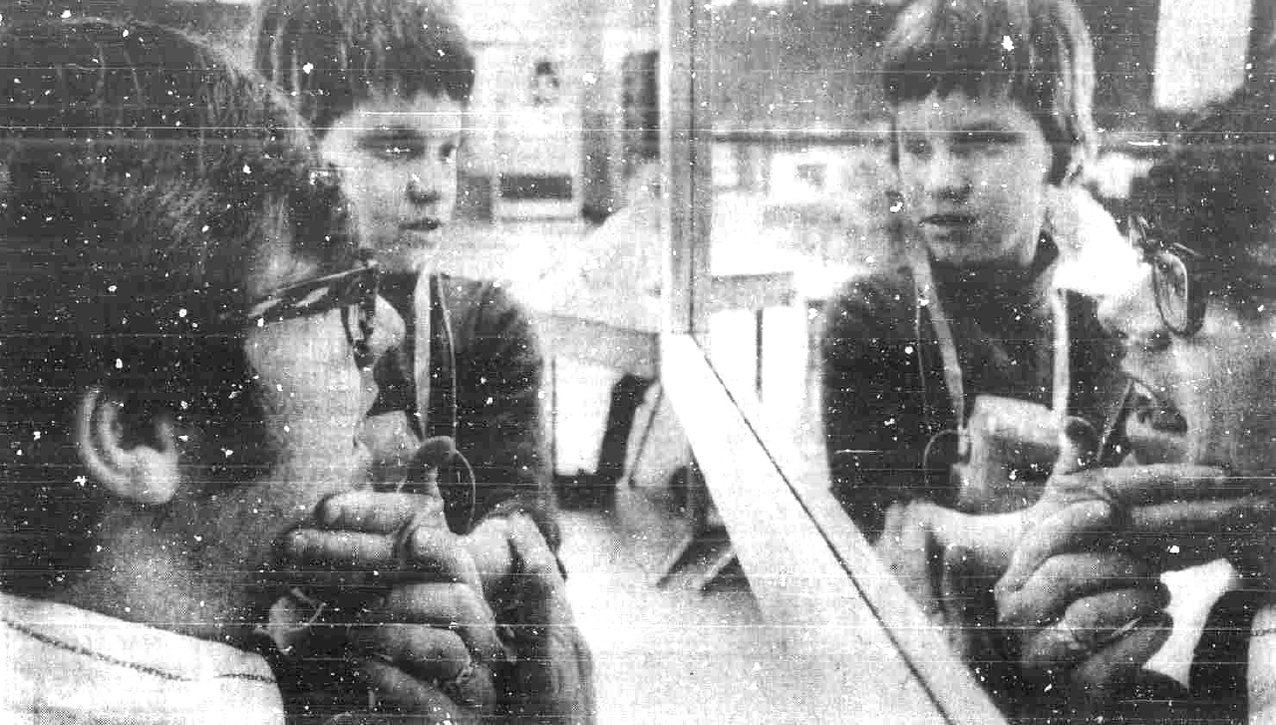
Deaf student Toni Ekenstam gets auditory training from Steven Noyce, a teacher of the deaf. Toni is taught to lip read and communicate with her own voice, one of several methods used to teach deaf children at the Utah School for the Deaf @ Deseret News, March 8, 1973. Deseret News Photo by Chief Photographer Don Groyston
Although the Utah School for the Deaf offered both listening and spoken language and ASL/English bilingual programs in 2011, they encountered issues comparable to those of the 1960s and 1970s. Parents had to choose between teaching Deaf children to speak and educating them in sign language. Superintendent Noyce took pride in the fact that the Utah School for the Deaf was the only state school that offered purely oral or bilingual education. Nonetheless, most other state schools used research to shape their current programs. The Utah Deaf Education Core Group additionally disapproved the Utah School of the Deaf's dual-track program. This was the same controversy that arose in 1962 when the Utah State Board of Education approved a dual-track educational system for the deaf (The Ogden Standard-Examiner, June 14, 1962). Additional information on the school's program is available below.
Private deaf schools all over the country have adopted the oral curriculum. There was a debate about whether the Utah School for the Deaf, a state-funded school, should offer both programs, as neighborhood schools could cater to Deaf and hard of hearing students who preferred speech services. However, the Utah School for the Deaf should have given equal importance to both available options. The publication of "The National Agenda: Moving Forward on Achieving Educational Equality for Deaf and Hard of Hearing Students" in April 2005 outlined standards to overcome biases in philosophy, placement, communication, and service delivery. At that time, the Utah Deaf Education Core Group felt that Superintendent Noyce, a graduate of Dr. Grant B. Bitter's Teacher Training Program, prioritized an oral approach at the University of Utah, which was a hindrance to expanding the bilingual program at the Utah School for the Deaf due to LSL bias. They wanted to ensure that his successor didn't take any steps backward with the Utah School for the Deaf, as Superintendent Noyce did. You can find further information about the Utah Deaf Education Core Group's disagreement with Superintendent Noyce on the "Dr. Robert G. Sanderson's Dream" webpage.
The Utah School for the Deaf is regards as a "beacon" by the LSL community. Unlike other state schools for the Deaf, which only offered a single teaching philosophy curriculum in ASL, the Utah School for the Deaf took pride in its unique approach of offering both Listening & Spoken Language and ASL/English bilingual options. Dr. Karl White and Superintendent Noyce played an instrumental role in promoting LSL services through state legislation, advocating for the two-track program and outreach services strategy. However, their involvement also caused some tension as the LSL community sought to model their operations after the USD's successful program, which interfered with other state schools for the deaf. The Deaf community in their respective states was fighting hard to protect their ASL/English bilingual curriculum, and Noyce and White's involvement had an impact on their efforts. To preserve and protect state schools for the deaf, the Deaf community needs to remain vigilant.
Private deaf schools all over the country have adopted the oral curriculum. There was a debate about whether the Utah School for the Deaf, a state-funded school, should offer both programs, as neighborhood schools could cater to Deaf and hard of hearing students who preferred speech services. However, the Utah School for the Deaf should have given equal importance to both available options. The publication of "The National Agenda: Moving Forward on Achieving Educational Equality for Deaf and Hard of Hearing Students" in April 2005 outlined standards to overcome biases in philosophy, placement, communication, and service delivery. At that time, the Utah Deaf Education Core Group felt that Superintendent Noyce, a graduate of Dr. Grant B. Bitter's Teacher Training Program, prioritized an oral approach at the University of Utah, which was a hindrance to expanding the bilingual program at the Utah School for the Deaf due to LSL bias. They wanted to ensure that his successor didn't take any steps backward with the Utah School for the Deaf, as Superintendent Noyce did. You can find further information about the Utah Deaf Education Core Group's disagreement with Superintendent Noyce on the "Dr. Robert G. Sanderson's Dream" webpage.
The Utah School for the Deaf is regards as a "beacon" by the LSL community. Unlike other state schools for the Deaf, which only offered a single teaching philosophy curriculum in ASL, the Utah School for the Deaf took pride in its unique approach of offering both Listening & Spoken Language and ASL/English bilingual options. Dr. Karl White and Superintendent Noyce played an instrumental role in promoting LSL services through state legislation, advocating for the two-track program and outreach services strategy. However, their involvement also caused some tension as the LSL community sought to model their operations after the USD's successful program, which interfered with other state schools for the deaf. The Deaf community in their respective states was fighting hard to protect their ASL/English bilingual curriculum, and Noyce and White's involvement had an impact on their efforts. To preserve and protect state schools for the deaf, the Deaf community needs to remain vigilant.
The Oral and Mainstream Education
Movements in Utah
Movements in Utah
Since 1962, the oral and mainstream education movements have significantly shaped deaf education in Utah, with Dr. Grant B. Bitter at the forefront. His 25-year tenure, from 1962 to 1987, was instrumental in driving this movement forward. In 1962, the Utah School for the Deaf implemented the dual-track program, also known as the "Y" system, as a result of the Utah Council for the Deaf, a group of parents' efforts in oral advocacy (UAD Bulletin, Fall-Winter 1962). This policy required all Deaf students to start the oral program during elementary school. It only allowed them to transfer to the simultaneous communication department if they had not succeeded in the oral program by the end of the sixth year of schooling or the age of 12 (The Utah Eagle, February 1968).
The Ogden's residential school also separated its oral and simultaneous communication programs, each with its own classrooms, dormitory facilities, dining halls, recess periods, and extracurricular activities, except the athlete programs, which were open to all students due to a player shortage (The Utah Eagle, February 1968; The Ogden Standard-Examiner, October 19, 1970). The most significant events were the student strikes in 1962 and 1969, which directly resulted from dissatisfaction with the dual-track program segregation system. Unfortunately, these strikes went unheard.
Following the 1962 protest against social segregation between oral and sign language students on Ogden's residential campus, Dr. Grant B. Bitter, a steadfast advocate for oral and mainstream education, and his oral supporters suspected that the Utah Association of the Deaf had organized the student strike. The Utah State Board of Education conducted an investigation but found no evidence of any connection between the students and the Utah Association for the Deaf (Sanderson, The UAD Bulletin, Summer 1963; Kenneth L. Kinner, personal communication, May 14, 2011). In the face of societal segregation, the simultaneous communication students demonstrated their unwavering determination and courage by staging their own protests.
Dr. Robert G. Sanderson, who served as the president of the Utah Association of the Deaf from 1960 to 1963, denied any involvement in a strike during his tenure. He maintained that the strike was a spontaneous reaction by students who felt that the conditions, restrictions, and personalities at the Utah School for the Deaf had become intolerable (Sanderson, The UAD Bulletin, Summer 1963). In the Fall-Winter 1962 issue of the UAD Bulletin, the Utah Association of the Deaf expressed its support for a classroom test of the dual-track program at the Utah School for the Deaf. However, they openly opposed complete social isolation, interference with religious activities, crippling the sports program, and intense pressure on children in the oral program to comply with the "no signing" rule (UAD Bulletin, Fall-Winter 1962, p. 2). The dual-track program's implementation marked a dark chapter in the history of deaf education in Utah.
Following the 1962 protest against social segregation between oral and sign language students on Ogden's residential campus, Dr. Grant B. Bitter, a steadfast advocate for oral and mainstream education, and his oral supporters suspected that the Utah Association of the Deaf had organized the student strike. The Utah State Board of Education conducted an investigation but found no evidence of any connection between the students and the Utah Association for the Deaf (Sanderson, The UAD Bulletin, Summer 1963; Kenneth L. Kinner, personal communication, May 14, 2011). In the face of societal segregation, the simultaneous communication students demonstrated their unwavering determination and courage by staging their own protests.
Dr. Robert G. Sanderson, who served as the president of the Utah Association of the Deaf from 1960 to 1963, denied any involvement in a strike during his tenure. He maintained that the strike was a spontaneous reaction by students who felt that the conditions, restrictions, and personalities at the Utah School for the Deaf had become intolerable (Sanderson, The UAD Bulletin, Summer 1963). In the Fall-Winter 1962 issue of the UAD Bulletin, the Utah Association of the Deaf expressed its support for a classroom test of the dual-track program at the Utah School for the Deaf. However, they openly opposed complete social isolation, interference with religious activities, crippling the sports program, and intense pressure on children in the oral program to comply with the "no signing" rule (UAD Bulletin, Fall-Winter 1962, p. 2). The dual-track program's implementation marked a dark chapter in the history of deaf education in Utah.
The Implementation
of the The Two-Track Program
at the Utah School for the Deaf
of the The Two-Track Program
at the Utah School for the Deaf
Another round of students' acts of resistance during the 1969 walkout protest against the continued enforcement of "Y" social segregation in the dual-track program was a defining moment in history, echoing the 1962 student protest at the Utah School for the Deaf. Despite not achieving the desired results, they found new ways to voice their discontent. Some sign language students boldly crossed the oral department hallway, while others took the simultaneous communication department route. This act of defiance broke the "Y" system rule, which had designated these spaces as 'off-limits' in order to maintain a 'clean' communication environment. Students even confronted their oral teachers, accusing them of oppression and dominance (Raymond Monson, personal communication, November 9, 2010). For nearly a decade, the Utah Association for the Deaf, in collaboration with the Parent-Teacher-Student Association, comprised supportive parents who advocated for sign language and fought against the "Y" system. Despite years of dismissal and opposition, their unwavering determination and resilience in the face of social segregation are truly admirable.
Superintendent Robert W. Tegeder, when faced with a challenging situation, sought assistance from his boss, Dr. Jay J. Campbell. Dr. Campbell, the husband of Beth Ann Campbell, a sign language interpreter and the Deputy Superintendent of the Utah State Office of Education, had been a crucial ally of the Utah Deaf community. Motivated by his concern for the welfare of Deaf children, he took the initiative to create the two-track program, a new instrument system that replaced the "Y" system (First Reunion of the Utah School for the Deaf Alumni, 1976; Campbell, 1977; Dr. Jay J. Campbell, personal communication, July 1, 2007). His dedication and commitment to the cause are genuinely inspiring.
Ned C. Wheeler, who became deaf at the age of 13 and graduated from the Utah School for the Deaf in 1933, was the chair of the USDB Governor's Advisory Council. He proposed the "two-track program" in response to various events, including Dr. Campbell's proposal, student strikes in 1962 and 1969, and opposition from the Parent Teacher Student Association to the "Y" system policy. On December 28, 1970, the Utah State Board of Education authorized a new policy, paving the way for the Utah School for the Deaf to operate a two-track program with choices, eliminating the "Y" system. This new program allowed parents to choose between oral and total communication methods of instruction for their deaf child aged between 2 1/2 and 21, marking a significant shift in deaf education (Kenneth L. Kinner, personal communication, May 14, 2011, Recommendations on Policy for the Utah School for the Deaf, 1970; Deseret News, December 29, 1970).
Superintendent Robert W. Tegeder, when faced with a challenging situation, sought assistance from his boss, Dr. Jay J. Campbell. Dr. Campbell, the husband of Beth Ann Campbell, a sign language interpreter and the Deputy Superintendent of the Utah State Office of Education, had been a crucial ally of the Utah Deaf community. Motivated by his concern for the welfare of Deaf children, he took the initiative to create the two-track program, a new instrument system that replaced the "Y" system (First Reunion of the Utah School for the Deaf Alumni, 1976; Campbell, 1977; Dr. Jay J. Campbell, personal communication, July 1, 2007). His dedication and commitment to the cause are genuinely inspiring.
Ned C. Wheeler, who became deaf at the age of 13 and graduated from the Utah School for the Deaf in 1933, was the chair of the USDB Governor's Advisory Council. He proposed the "two-track program" in response to various events, including Dr. Campbell's proposal, student strikes in 1962 and 1969, and opposition from the Parent Teacher Student Association to the "Y" system policy. On December 28, 1970, the Utah State Board of Education authorized a new policy, paving the way for the Utah School for the Deaf to operate a two-track program with choices, eliminating the "Y" system. This new program allowed parents to choose between oral and total communication methods of instruction for their deaf child aged between 2 1/2 and 21, marking a significant shift in deaf education (Kenneth L. Kinner, personal communication, May 14, 2011, Recommendations on Policy for the Utah School for the Deaf, 1970; Deseret News, December 29, 1970).
However, while supervising the Utah School for the Deaf, Dr. Campbell noticed that parents were often unaware of their children's educational and communication options (Campbell, 1977). Despite the Utah State Board of Education releasing policies in 1970, 1977, and 1998, the Utah School for the Deaf's Communication Guidelines did not provide parents with a wide range of choices. This lack of clarity resulted in ineffective placement tactics due to the prevalent oral bias. On April 14, 1977, Dr. Campbell presented his 200-page study report concerning the Utah School for the Deaf at the Utah State Board of Education. He also sought to improve the school's education system through more equitable evaluation and placement methods. However, Dr. Bitter, a professor at the University of Utah at the time, vehemently opposed Dr. Campbell's research, accusing it of containing falsehoods and drawing unfounded conclusions about the University of Utah's Teacher Oral Training Program and educational programs across the state (G.B. Bitter, personal communication, March 6, 1978). The presentation was heated, with over 300 parents supporting the oral method and applauding Dr. Bitter and Peter Viahos, an Ogden attorney and father of a Deaf daughter, as they presented their arguments (The Ogden Standard-Examiner, April 15, 1977).
A group of parents, under the influence of Dr. Bitter, petitioned the Utah State Board of Education. They sought to suspend Dr. Campbell's comprehensive study, citing its inconclusive nature. Also, dissatisfied with his research findings, they demanded his termination (Dr. Jay J. Campbell, personal communication, July 1, 2007). Approximately 50 to 60 Deaf individuals attended the meeting (Grant Bitter: Everett L. Cooley Oral History Project, March 17, 1987). Those attendees were Ned C. Wheeler, W. David Mortensen, Lloyd Perkins, Dennis Platt, Kenneth L. Kinner, and others.
Dr. Bitter, a spokesperson for the oral advocates, presented Dr. Campbell's boss, Dr. Walter D. Talbot, the State Superintendent of Public Instruction, with three options:
Dr. Talbot's response to Dr. Bitter's appeal sparked a firestorm of tension. The Deaf group fiercely opposed the State Board's decision to reassign Dr. Campbell within the Utah State Office of Education. Their dissatisfaction was intense, leading them to express their protest by stomping their feet on the floor. In his 1987 interview with the University of Utah, Dr. Bitter described the scene as highly emotional and chaotic, prompting him to consider leaving the room. Concerned about the escalating situation, Dr. Talbot asked the Deaf community members to leave the room (Grant Bitter: Everett L. Cooley Oral History Project, March 17, 1987). Disagreements still exist about what the Deaf people did during the meeting, as different versions of what happened differ.
The Utah State Board of Education accepted Dr. Campbell's report and supporting documentation. However, despite the controversy surrounding his analysis, which included data from independent researchers, they disregarded all of his recommendations (The Ogden Standard-Examiner, April 15, 1977). This decision had consequences, as Dr. Campbell's plan crumbled down, including a two-year study to improve education through fair assessment and placement procedures. His plan was buried and forgotten (Dr. Jay J. Campbell, personal communication, July 1, 2007).
The mental trend of the "Y" system in the two-track program, with prevalent oral bias, persisted. This biased information had a profound impact, limiting the choices parents could make for their Deaf children's education and communication. Although Dr. J. Jay Campbell tried to provide fair information in the 1970s, Dr. Bitter opposed his efforts because he believed that total communication was a concept, not a word, and also a philosophy, not a method (Campbell, 1977; Cummins, The Salt Lake Tribune, August 20, 1977, p. 25; Bitter, Concern with Deaf Center Paper, 1985). In 2010, the Utah Deaf Education Core Group challenged this biased approach and advocated for unbiased and equal information. Superintendent Steven W. Noyce of the Utah Schools for the Deaf and the Blind, an oral advocate and former university student of Dr. Bitter, as well as a long-time teacher and school director, created the Parent Infant Program Orientation to provide parents with fair and balanced information. However, parents still had to choose an "either/or" selection between ASL/English bilingual (replaced total communication) or listening and spoken language (replace oral) options for their children's education and communication, which resulted in the expansion of the listening and spoken program because the majority of Deaf children are born to hearing parents.
Dr. Bitter, a spokesperson for the oral advocates, presented Dr. Campbell's boss, Dr. Walter D. Talbot, the State Superintendent of Public Instruction, with three options:
- Removing Dr. Campbell from his position;
- Assigning him to another position; or
- Requesting a grand jury investigation into the evidence demonstrating how oral Deaf individuals were intimidated by some of the state's programs (Grant Bitter: Everett L. Cooley Oral History Project, March 17, 1987).
Dr. Talbot's response to Dr. Bitter's appeal sparked a firestorm of tension. The Deaf group fiercely opposed the State Board's decision to reassign Dr. Campbell within the Utah State Office of Education. Their dissatisfaction was intense, leading them to express their protest by stomping their feet on the floor. In his 1987 interview with the University of Utah, Dr. Bitter described the scene as highly emotional and chaotic, prompting him to consider leaving the room. Concerned about the escalating situation, Dr. Talbot asked the Deaf community members to leave the room (Grant Bitter: Everett L. Cooley Oral History Project, March 17, 1987). Disagreements still exist about what the Deaf people did during the meeting, as different versions of what happened differ.
The Utah State Board of Education accepted Dr. Campbell's report and supporting documentation. However, despite the controversy surrounding his analysis, which included data from independent researchers, they disregarded all of his recommendations (The Ogden Standard-Examiner, April 15, 1977). This decision had consequences, as Dr. Campbell's plan crumbled down, including a two-year study to improve education through fair assessment and placement procedures. His plan was buried and forgotten (Dr. Jay J. Campbell, personal communication, July 1, 2007).
The mental trend of the "Y" system in the two-track program, with prevalent oral bias, persisted. This biased information had a profound impact, limiting the choices parents could make for their Deaf children's education and communication. Although Dr. J. Jay Campbell tried to provide fair information in the 1970s, Dr. Bitter opposed his efforts because he believed that total communication was a concept, not a word, and also a philosophy, not a method (Campbell, 1977; Cummins, The Salt Lake Tribune, August 20, 1977, p. 25; Bitter, Concern with Deaf Center Paper, 1985). In 2010, the Utah Deaf Education Core Group challenged this biased approach and advocated for unbiased and equal information. Superintendent Steven W. Noyce of the Utah Schools for the Deaf and the Blind, an oral advocate and former university student of Dr. Bitter, as well as a long-time teacher and school director, created the Parent Infant Program Orientation to provide parents with fair and balanced information. However, parents still had to choose an "either/or" selection between ASL/English bilingual (replaced total communication) or listening and spoken language (replace oral) options for their children's education and communication, which resulted in the expansion of the listening and spoken program because the majority of Deaf children are born to hearing parents.
Jeff W. Pollock, a member of the USDB Advisory Council representing the Utah Deaf community, requested on February 10, 2011, that the Utah School for the Deaf implement the guidelines titled "The National Agenda: Moving Forward on Achieving Educational Equality for Deaf and Hard of Hearing Students" to address philosophical, placement, communication, and service delivery biases. One of the members of the Advisory Council wondered if the Deaf National Agenda was solely based on ASL. He clarified that the Deaf National Agenda does not exclusively rely on ASL but instead emphasizes the holistic development of each child, supporting both ASL and spoken language, unlike the current system's "either/or" approach. Jeff then addressed Superintendent Noyce in the eyes and stated that the USD has reverted to the inefficient "Y" system of the last 30–40 years, with an oral OR sign, and is not providing both ASL and LSL to parents who want both options. Superintendent Noyce remained silent about the subject. The "Y" system mental trend in the two-track program with prevalent oral bias persisted until Joel Coleman, superintendent of Utah Schools for the Deaf and Blind, and Michelle Tanner, associate superintendent of Utah Schools for the Deaf, took action. Creating the Hybrid Program in 2016 was a significant step towards removing the requirement for parents to choose between the two programs "either/or." Their innovative approach is crucial and brings hope for unbiased and equal information. More information about the hybrid program can be found at the end of this webpage.
Suffice it to say, Dr. Grant B. Bitter was a prominent figure in Utah's oralism and mainstreaming movement, which had a significant impact on deaf education in Utah since 1962, despite the new two-track program and the school's option guidelines. As a result of his efforts, the number of students attending Ogden's residential school for Deaf students decreased, and the quality of education also declined. The mainstreaming approach gained popularity but left many alums heartbroken.
Controversy with Dr. Grant B. Bitter,
the Father of Mainstreaming
the Father of Mainstreaming
Under the leadership of Dr. Grant B. Bitter, a firm advocate for oral and mainstream education, Utah's groundbreaking movement to mainstream all Deaf children began in the 1960s. Dr. Bitter's efforts earned him the title of 'Father of Mainstreaming.' This movement was in stark contrast to the historical significance of Dr. Martha Hughes Cannon, the country's first female state senator and a member of the Board of Trustees of the Utah School for the Deaf and Blind, who in 1896 spearheaded a proposal for the 'Act Providing for Compulsory Education of Deaf, Dumb, and Blind Citizens,' which made attendance at the Utah School for the Deaf and Blind mandatory (Martha Hughes Cannon, Wikipedia, April 20, 2024). Her legislation led to its successful passage in 1896 and marked a turning point in the education of Deaf and Blind children. However, Dr. Bitter advocated for mainstreaming all Deaf children, paving the way for widespread acceptance of this approach in 1975 with the passage of Public Law 94-142, now known as the Individuals with Disabilities Education Act.
His daughter, Colleen, was born deaf in 1954, which was another reason for his dedication to the advancement of both oral and mainstream education. Dr. Bitter supported the idea of mainstreaming for all Deaf and hard of hearing children for two main reasons: his own Deaf daughter and his internship experience at the Lexington School for the Deaf. During his master's degree studies, he interned at Lexington School for the Deaf, an oral school, and was shocked to see young children having to leave their parents for a week, often crying and screaming. His role as a father of a Deaf child, as well as his experience, inspired him to advocate for mainstreaming, allowing Deaf children to attend local public schools at home (Grant Bitter: Everett L. Cooley Oral History Project, March 17, 1987).
His daughter, Colleen, was born deaf in 1954, which was another reason for his dedication to the advancement of both oral and mainstream education. Dr. Bitter supported the idea of mainstreaming for all Deaf and hard of hearing children for two main reasons: his own Deaf daughter and his internship experience at the Lexington School for the Deaf. During his master's degree studies, he interned at Lexington School for the Deaf, an oral school, and was shocked to see young children having to leave their parents for a week, often crying and screaming. His role as a father of a Deaf child, as well as his experience, inspired him to advocate for mainstreaming, allowing Deaf children to attend local public schools at home (Grant Bitter: Everett L. Cooley Oral History Project, March 17, 1987).
In the 1970s, Dr. Stephen C. Baldwin, a Deaf educator who served as the Total Communication Division Curriculum Coordinator at the Utah School for the Deaf, shared his observations of Dr. Bitter. Dr. Bitter, a firm advocate of oral and mainstream philosophy, was particularly vocal about his beliefs. His influence, as Dr. Baldwin noted, was profound. Dr. Bitter was a hard-core oralist and one of the top figures in oral education, and no one was more persistent than him in promoting an oral and mainstream approach. Dr. Baldwin also recalled how Dr. Bitter criticized the popular use of sign language, arguing that it hindered the development of oral skills and enrollment in residential settings, which he believed isolated Deaf individuals from mainstream society (Baldwin, 1990).
Dr. Bitter's advocacy for the oral and mainstreaming movements sparked a long-standing feud with the Utah Association for the Deaf, a group comprised mainly of graduates from the Utah School for the Deaf, particularly Dr. Robert G. Sanderson, a prominent Deaf community leader in Utah who became deaf at the age of 11 and was a staunch supporter of sign language and state schools for the deaf. The intense animosity between these two giants was due to the ongoing dispute over oral and sign language in Utah's deaf educational system. Their struggle was akin to a chess game, with each maneuvering politically to gain the upper hand in the deaf educational system. This included disputes during oral demonstrations, protests, education committee meetings, and board meetings. Dr. Bitter, who opposed anyone who stood in the way of his goals of promoting oral and mainstream education, has formally requested the job removal of Dr. Robert Sanderson and Dr. Jay J. Campbell, both respected advocates for sign language. He believed they were interfering with his mission. Additionally, he expressed dissatisfaction with Beth Ann Stewart Campbell's television interpretation of news in sign language, feeling it did not align with his educational goals. He also asked Della L. Loveridge, a Utah legislator and respected committee chairperson, to resign because she invited representatives from the Utah Association for the Deaf, which he saw as a shift from the committee's focus. The Utah Association for the Deaf, in the face of Dr. Bitter's opposition, demonstrated remarkable resilience, marking a significant turning point in their history and inspiring others with their strength and determination.
Dr. Bitter has had an extensive career in teaching and curriculum development. His journey began at the Extension Division of the Utah School for the Deaf in Salt Lake City, Utah, where he worked as a teacher and curriculum coordinator. His passion for education led him to become a director and professor in the Teacher Training Program, where he focused primarily on oral education under the Department of Special Education at the University of Utah. Dr. Bitter also served as the coordinator of the Deaf Seminary Program under The Church of Jesus Christ of Latter-day Saints in Utah.
Dr. Bitter believed strongly in oralism, which is the belief that Deaf individuals should learn to speak. He was so committed to this idea that he included it in his teaching methods for the Teacher Training Program at the University of Utah. To support this cause, he founded the Oral Deaf Association of Utah (ODAU) in 1970 and the Utah Registry of Oral Interpreters in 1981 (Bitter, Summary Report for Tenure, 1985; Bitter, Utah's Hearing-Impaired Children... At High Risk, 1986).
Dr. Bitter believed strongly in oralism, which is the belief that Deaf individuals should learn to speak. He was so committed to this idea that he included it in his teaching methods for the Teacher Training Program at the University of Utah. To support this cause, he founded the Oral Deaf Association of Utah (ODAU) in 1970 and the Utah Registry of Oral Interpreters in 1981 (Bitter, Summary Report for Tenure, 1985; Bitter, Utah's Hearing-Impaired Children... At High Risk, 1986).
The Implementation of the Dual-Track Program,
Commonly Known as "Y" System
at the Utah School for the Deaf
Commonly Known as "Y" System
at the Utah School for the Deaf
In the fall of 1962, the Utah Deaf community was surprised by the revolutionary changes at the Utah School for the Deaf, which introduced the dual-track program, also commonly known as the "Y" system. The unexpected change had a profound impact on the education of Deaf children, evoking a sense of empathy within the community. The Utah Association of the Deaf, which advocated for sign language, was unaware that the Utah Council for the Deaf had spearheaded the change, advocating for speech-based instruction and successfully pushing for its implementation at the Utah School for the Deaf in Ogden, Utah (The UAD Bulletin, Fall-Winter 1962). It is believed that Dr. Bitter was a member of this council. The dual-track program provided an oral program in one department and a simultaneous communication program in another department, which was later replaced by a combined system. However, the dual-track policy mandated that all Deaf children begin with the oral program (The Utah Eagle, February 1968; Gannon, 1981). The Utah State Board of Education, a key player in educational policy, approved this policy reform on June 14, 1962, with endorsement from the Special Study Committee on Deaf Education (The Ogden Standard-Examiner, June 14, 1962; Wight, The Ogden Standard-Examiner, October 19, 1970). The newly hired superintendent, Robert W. Tegeder, accepted the parents' proposals and initiated changes to the school system (The UAD Bulletin, Fall-Winter, 1962; Grant Bitter: Everett L. Cooley Oral History Project, March 17, 1987). This new program not only affected the lives of Deaf children but also their families.
The "Y" system, part of the dual-track program, imposed significant restrictions and challenges on students and their families. This system separated learning into two distinct channels: the oral department, which focused on speech, lipreading, amplified sound, and reading, and the simultaneous communication department, which emphasized instruction through the manual alphabet, signs, speech, and reading. Initially, all Deaf children were required to enroll in the oral program for the first six years of their schooling (The Utah Eagle, February 1968). Following this period, a committee would assess each child's progress and determine their placement (The Utah Eagle, February 1968). The "Y" system favored the oral mechanism over the sign language approach, limiting families' choices in the school system. The school's preference for the oral mechanism was based on the belief that speech was crucial for Deaf children's integration into the hearing world. Parents and Deaf students did not have the freedom to choose the program until the child entered 6th or 7th grade, at which point they could either continue in the oral department or transition to the simultaneous communication department (The Utah Eagle, February 1968; Dr. Grant B. Bitter's Paper, 1970s; Deanne Kinner Montgomery, personal communication, May 4, 2024).
The placement of transferred students in the signing program labeled them as "oral failures" (The UAD Bulletin, Spring 1965). There was a discussion about the age at which students can transfer to a simultaneous communication program. According to the "First Reunion of the Utah School for the Deaf Alumni Program Book, 1976," this would be when they were 10–12 years old or entered sixth grade. However, according to the Utah Eagle's February 1968 issue, students must remain in the oral program for the first six years of school, which may be in the 6th or 7th grade. So, I am using between the 6th and 7th grades, rather than based on their age. Their birth date, progression, and other factors could determine their placement.
The "Y" system, part of the dual-track program, imposed significant restrictions and challenges on students and their families. This system separated learning into two distinct channels: the oral department, which focused on speech, lipreading, amplified sound, and reading, and the simultaneous communication department, which emphasized instruction through the manual alphabet, signs, speech, and reading. Initially, all Deaf children were required to enroll in the oral program for the first six years of their schooling (The Utah Eagle, February 1968). Following this period, a committee would assess each child's progress and determine their placement (The Utah Eagle, February 1968). The "Y" system favored the oral mechanism over the sign language approach, limiting families' choices in the school system. The school's preference for the oral mechanism was based on the belief that speech was crucial for Deaf children's integration into the hearing world. Parents and Deaf students did not have the freedom to choose the program until the child entered 6th or 7th grade, at which point they could either continue in the oral department or transition to the simultaneous communication department (The Utah Eagle, February 1968; Dr. Grant B. Bitter's Paper, 1970s; Deanne Kinner Montgomery, personal communication, May 4, 2024).
The placement of transferred students in the signing program labeled them as "oral failures" (The UAD Bulletin, Spring 1965). There was a discussion about the age at which students can transfer to a simultaneous communication program. According to the "First Reunion of the Utah School for the Deaf Alumni Program Book, 1976," this would be when they were 10–12 years old or entered sixth grade. However, according to the Utah Eagle's February 1968 issue, students must remain in the oral program for the first six years of school, which may be in the 6th or 7th grade. So, I am using between the 6th and 7th grades, rather than based on their age. Their birth date, progression, and other factors could determine their placement.
As a result of the "Y" system's implementation, the Utah School for the Deaf had to undergo significant changes. The school had to hire more oral teachers and establish speech as the primary mode of communication, shifting the focus of the learning environment. The dual-track program initially placed all elementary school students in the oral department, transferring them to the simultaneous communication department only if they failed in the oral program. This approach was based on the belief that early development of oral skills was crucial for Deaf students, with sign language learning considered a secondary focus. The change in focus and the increased hiring of oral teachers had a significant impact on the school's learning environment, altering its dynamics and atmosphere (The Utah Eagle, February 1968; Deanne Kinner Montgomery, personal communication, May 4, 2024).
The dual-track program shifted its approach for prospective teachers from sign language to the oral method, prioritizing speech as the primary mode of communication for Deaf students in classrooms. The administrators at the Utah School for the Deaf considered the dual-track program to be more advantageous than a single-track system (The Utah Eagle, February 1968; Wight, The Ogden Standard-Examiner, October 19, 1970). According to them, the oral program required a "pure oral mindset." In 1968, the Utah School for the Deaf was one of the few residential schools in the country to offer an exclusively oral program for elementary students (The Utah Eagle, February 1968). By 1973, the Utah School for the Deaf was the only school in the United States that provided parents and Deaf students with both methods of communication through the dual-track system (Laflamme, The Ogden Standard-Examiner, September 5, 1973).
On June 14, 1962, the Utah State Board of Education approved the dual-track program, which led to the division of the Ogden campus into two parts during the summer break (The Ogden Standard-Examiner, June 14, 1962). The dual-track program also divided Ogden's residential campus into an oral department and a simultaneous communication department, each with its own classrooms, dining halls, dormitory facilities, recess periods, and extracurricular activities. The school prohibited interaction between oral and sign language students (The Utah Eagle, February 1968; Wight, The Ogden Standard-Examiner, October 19, 1970). However, due to low student enrollment in competitive sports, the athletic program combined both departments. The team had oral and sign language coaches to communicate with their respective students (The Utah Eagle, February 1968). This unique situation highlights the challenges and complexities of implementing the dual-track program.
During the 1962–63 school year, some changes were made at the Utah School for the Deaf without informing the Deaf students. When the students arrived at school in August, they were surprised to find out about the changes. These changes caused a lot of anger among older students, as well as many disagreements between veteran teachers and the Utah Deaf community. Barbara Schell Bass, a long-serving Deaf teacher at the Utah School for the Deaf, said that the students' physical and methodological separation had painful consequences. Many teachers lost their friendships due to philosophical disagreements, classmates isolated themselves from each other, and administrators struggled to divide their loyalties (Bass, 1982).
The dual-track program's "Y" segregation system, which separated oral and sign language students, caused dissatisfaction and led to protests. High school students raised concerns about this system, but the school administration dismissed their objections. In 1962 and 1969, the students went on strike to oppose the new dual-track policy because they felt it created a "wall" that prevented oral and sign language students from interacting with each other. Despite the students' outcry, the school administration continued the dual-track policy.
The dual-track program shifted its approach for prospective teachers from sign language to the oral method, prioritizing speech as the primary mode of communication for Deaf students in classrooms. The administrators at the Utah School for the Deaf considered the dual-track program to be more advantageous than a single-track system (The Utah Eagle, February 1968; Wight, The Ogden Standard-Examiner, October 19, 1970). According to them, the oral program required a "pure oral mindset." In 1968, the Utah School for the Deaf was one of the few residential schools in the country to offer an exclusively oral program for elementary students (The Utah Eagle, February 1968). By 1973, the Utah School for the Deaf was the only school in the United States that provided parents and Deaf students with both methods of communication through the dual-track system (Laflamme, The Ogden Standard-Examiner, September 5, 1973).
On June 14, 1962, the Utah State Board of Education approved the dual-track program, which led to the division of the Ogden campus into two parts during the summer break (The Ogden Standard-Examiner, June 14, 1962). The dual-track program also divided Ogden's residential campus into an oral department and a simultaneous communication department, each with its own classrooms, dining halls, dormitory facilities, recess periods, and extracurricular activities. The school prohibited interaction between oral and sign language students (The Utah Eagle, February 1968; Wight, The Ogden Standard-Examiner, October 19, 1970). However, due to low student enrollment in competitive sports, the athletic program combined both departments. The team had oral and sign language coaches to communicate with their respective students (The Utah Eagle, February 1968). This unique situation highlights the challenges and complexities of implementing the dual-track program.
During the 1962–63 school year, some changes were made at the Utah School for the Deaf without informing the Deaf students. When the students arrived at school in August, they were surprised to find out about the changes. These changes caused a lot of anger among older students, as well as many disagreements between veteran teachers and the Utah Deaf community. Barbara Schell Bass, a long-serving Deaf teacher at the Utah School for the Deaf, said that the students' physical and methodological separation had painful consequences. Many teachers lost their friendships due to philosophical disagreements, classmates isolated themselves from each other, and administrators struggled to divide their loyalties (Bass, 1982).
The dual-track program's "Y" segregation system, which separated oral and sign language students, caused dissatisfaction and led to protests. High school students raised concerns about this system, but the school administration dismissed their objections. In 1962 and 1969, the students went on strike to oppose the new dual-track policy because they felt it created a "wall" that prevented oral and sign language students from interacting with each other. Despite the students' outcry, the school administration continued the dual-track policy.
Dr. Bitter also had significant power as a parental figure and used it to push for oralism, making it difficult for the Utah Association for the Deaf to challenge him. When the Teacher Training Program in the Department of Special Education at the University of Utah closed in 1986, he retired in 1987 (Bitter, A Summary Report for Tenure, March 15, 1985). Today, the Department of Special Education at the University of Utah offers a Specialization in Deaf and Hard of Hearing Program. While the curriculum does include American Sign Language classes, it still places a greater emphasis on Listening and Spoken Language. This reflects the impact that Dr. Bitter, who passed away in 2000, continues to have on deaf education in Utah. To learn more about the evolving mainstreaming movement, visit the 'Dr. Robert G. Sanderson's Mainstreaming Perspective' webpage.
Battling with Steven W. Noyce,
an Oral Promoter
an Oral Promoter
The Utah Deaf community was concerned that Steven W. Noyce, a long-time teacher and director of the Utah School for the Deaf, would seek to carry on Dr. Bitter's legacy, jeopardizing the ASL/English bilingual program they had worked so hard to establish when the Utah State Board of Education elected him superintendent of the Utah Schools for the Deaf and the Blind in August 2009. The state board disregarded the Utah Deaf community's outcry.
Steven Noyce was no stranger to the Utah Deaf community, having graduated from the Teacher Training Program at the University of Utah between 1965 and 1972 (LinkedIn: Steven Noyce). We were concerned about his advocacy for oral education. In response, Ella Mae Lentz, a co-founder of the Deafhood Foundation and a vocal champion for deaf education, proposed founding the Deaf Education Core Group in April 2010. The group aimed to protect ASL/English bilingual education and fight inequality in the deaf education system.
The Utah Deaf Education Core Group spent a year trying to persuade the Utah State Board of Education to terminate Steven Noyce's two-year contract from 2010 to 2011. However, the board rejected their efforts and extended his contract for another two years, from 2011 to 2013. His contract was eventually terminated by the Utah State Board of Education in 2013, but the reason for the termination remains unknown.
Battling with Dr. Karl R. White,
a Global Oral Leader
a Global Oral Leader
Dr. Karl R. White, a psychology professor at Utah State University and the founding director of the National Center for Hearing Assessment and Management (NCHAM) on the university campus, demonstrated a visionary approach. He foresaw the potential of Early Hearing Detection and Intervention (EHDI) Programs in the United States and globally, envisioning an international database to study the causes of hearing loss and expand genetic resources. Under his NCHAM leadership, advances in Listening and Spoken Language and cochlear implants directly impacted the availability and accessibility of learning American Sign Language (ASL) at state schools for the deaf nationally and worldwide.
Early Detection
of Deafness in Newborns
of Deafness in Newborns
Dr. Karl White, who worked at the National Technical Institute for the Deaf in Rochester, New York, was interested in early hearing loss detection in newborns. Despite having no experience in deaf education, he conducted clinical trials for newborn hearing tests from 1988 to 1993. His interest led him to establish the National Center for Hearing Assessment and Management (NCHAM) in 1990. The National Institute of Health (NIH) took notice of his studies and announced the screening for hearing loss for all newborns in 1993. This screening program significantly improved the early detection of hearing loss in children across the United States, leading to the annual Conference on Early Hearing Detection and Intervention (EHDI) of the National Center for Hearing Assessment and Management at Utah State University in 2000 and eventually at other states as well. As a result, Dr. White became a highly sought-after consultant for hospitals and health agencies in other states that wanted to make newborn hearing screenings available to the public.
While traveling around the world as a consultant, Dr. White began noticing that Deaf and hard of hearing babies and toddlers who received a cochlear implant early in life and entered an early intervention and preschool program that focused on listening and speaking skills were able to function in a classroom without a hearing aid around the age of seven (Lambert, The Ogden Standard-Examiner, 2007, 4A). Dr. White concluded from his research that all babies with hearing loss could undergo surgical cochlear implantation. Engaging them in a listening and spoken language program during infancy or toddlerhood would eliminate the need to learn sign language or attend state schools for the deaf. His involvement as a consultant led to the establishment of Sound Beginnings on May 3, 2007, on the Utah State University campus for Deaf newborns and toddlers with cochlear implants, despite opposition from the Deaf Logan community.
The Establishment
of the Sound Beginnings Program
of the Sound Beginnings Program
On May 3, 2007, a meeting was held at Utah State University to establish Sound Beginnings, an Oral Deaf Education program. Dr. Todd Houston, the program director of Sound Beginnings, informed the audience about the "Sound Beginnings of Cache Valley" grant. This $3 million program initiative focused on auditory-oral development, spoken language development, and listening skills. The meeting was attended by Superintendent Linda Rutledge of the Utah Schools for the Deaf and the Blind, as well as other representatives from USDB. Dr. Houston and Dr. Beth Foley showed an introductory DVD of USU's Dean of the College of Education. It showcased parents, teachers, administrative staff, and a team of specialists working together as "partners in a supportive system" to provide successful oral education to children in a "normal, ordinary, independent, happy environment." The children gained great independence and could integrate into mainstream school settings.
During the meeting, one of the speakers was Jean Sachar Moog, the director of the Moog Center for Deaf Education in St. Louis, Missouri. She is also the creator of the Moog Curriculum, which Sound Beginnings implemented. Ms. Moog was my principal when I attended the Central Institute for the Deaf in St. Louis, Missouri; her daughter, Betsy, was my teacher. During the meeting, she proudly explained that she had established Moog Training Centers to help parents who could not afford to move to St. Louis. Ms. Moog expressed excitement about expanding her Moog curriculum nationally and internationally.
A panel discussion was next on the meeting’s agenda. The panel included professionals and parents of children with cochlear implants. A moderator relayed questions from the audience to the panel. The audience wrote their questions on 4x6 cards for the panelists to answer.
Dr. Cynthia Plue, a representative of the Utah Deaf community, was present at the meeting and informed us of what was going on, as previously stated above (Dr. Cynthia Plue, personal communication, May 1, 2009).
A panel discussion was next on the meeting’s agenda. The panel included professionals and parents of children with cochlear implants. A moderator relayed questions from the audience to the panel. The audience wrote their questions on 4x6 cards for the panelists to answer.
Dr. Cynthia Plue, a representative of the Utah Deaf community, was present at the meeting and informed us of what was going on, as previously stated above (Dr. Cynthia Plue, personal communication, May 1, 2009).
The Impact of
Sound Beginnings on Deaf Education
Sound Beginnings on Deaf Education
The Oberkotter Foundation granted Dr. White's request for a $3 million grant to fund his listening and spoken language interventions. This was the largest private foundation in America that focused on the LSL approach for children who are deaf or hard of hearing. Because of this significant support, this early childhood educational program was tuition-free for Deaf children aged from newborn to five years old (Lambert, The Ogden Standard-Examiner, 2007, 1A; Kristi Mortensen, personal communication, June 26, 2009). The children in the program have access to specialists in early childhood deaf education, audiology, and speech-language pathology. The purpose of the program was to enable these Deaf children to succeed alongside their hearing peers without the use of sign language. The Sound Beginnings relies on cochlear implants in these profoundly deaf or severely hard of hearing babies and toddlers (Lambert, The Ogden Standard-Examiner, 2007, 1A).
While Dr. White acknowledged that cochlear implants do not allow children to hear in the biological sense, he decided that his program would not encourage children to sign for fear of it becoming a crutch and reducing children's chances of mastering spoken English. Dr. White's approach lacked support from linguistics research, validation from language acquisition experts, consultation with Utah State University's Deaf Education Department professors, and a lack of research in the burgeoning field of bilingual linguistics. Dr. White responded to the criticism by stating that the program would not order children already using sign language to stop (Lambert, The Ogden Standard-Examiner, 2007, 1A).
Dr. White continued with his early intervention approach. If only he had checked first. According to a bilingual study, a child who has mastered his first language will use it to learn a second language. When it comes to Deaf and hard of hearing children, their first language is American Sign Language, and English is their second language. He could have also discovered evidence that sign language supports and improves speech development (Graney, 1997). Despite having no expertise or qualifications in this field, Dr. White severely impacted Utah's deaf education system. Did he consider how his actions would affect others? Unfortunately, he made a fortune for himself and USU through ongoing funding from the Oberkotter Foundation. The message was clear: money talks.
The university requested that he initiate a training program for audiologists and speech-language therapists, emphasizing cochlear implant technology and methods for integrating sound and language in therapy. According to Kristen Mortensen's personal communication on June 26, 2009, USU provided financial support for the full-time teaching positions created for the new training program. However, their oral curriculum deprived non-signing preschool children of learning ASL. He used all of this money to encourage parents to enroll their children in his Sound Beginnings program, promising to teach them listening and spoken language.
While Dr. White acknowledged that cochlear implants do not allow children to hear in the biological sense, he decided that his program would not encourage children to sign for fear of it becoming a crutch and reducing children's chances of mastering spoken English. Dr. White's approach lacked support from linguistics research, validation from language acquisition experts, consultation with Utah State University's Deaf Education Department professors, and a lack of research in the burgeoning field of bilingual linguistics. Dr. White responded to the criticism by stating that the program would not order children already using sign language to stop (Lambert, The Ogden Standard-Examiner, 2007, 1A).
Dr. White continued with his early intervention approach. If only he had checked first. According to a bilingual study, a child who has mastered his first language will use it to learn a second language. When it comes to Deaf and hard of hearing children, their first language is American Sign Language, and English is their second language. He could have also discovered evidence that sign language supports and improves speech development (Graney, 1997). Despite having no expertise or qualifications in this field, Dr. White severely impacted Utah's deaf education system. Did he consider how his actions would affect others? Unfortunately, he made a fortune for himself and USU through ongoing funding from the Oberkotter Foundation. The message was clear: money talks.
The university requested that he initiate a training program for audiologists and speech-language therapists, emphasizing cochlear implant technology and methods for integrating sound and language in therapy. According to Kristen Mortensen's personal communication on June 26, 2009, USU provided financial support for the full-time teaching positions created for the new training program. However, their oral curriculum deprived non-signing preschool children of learning ASL. He used all of this money to encourage parents to enroll their children in his Sound Beginnings program, promising to teach them listening and spoken language.
The Utah Deaf community was deeply disappointed by Dr. Karl White's shortcomings. His view of sign language as a crutch was an insult, and his belief that deafness needed fixing was a rejection of Deaf identity and culture. The Deaf community encompasses cultural, societal, and linguistic aspects, and Dr. White's ideology diminished them as a people with a language. Despite his psychology degree, Dr. White appeared ignorant of the psychology of being deaf. He abruptly excluded the Utah Deaf community, leaving them voiceless and without the ability to express their concerns or viewpoints. The community questioned whether Dr. White had considered the impact of his Sound Beginnings program on the families of Deaf or hard of hearing children who participated in it. They wondered if he was encouraging parents to support audism against the Deaf community, disregarding the diversity of the program's children, or intending to establish a world without exception. They also questioned whether the program's creation prioritized the child's overall development. Ultimately, the Utah Deaf community found the program's objectives unsatisfactory, a profound disappointment in the face of such high expectations.
Conflict Arises
Dr. White's activities had an impact on the SKI-HI Institute and Deaf Mentor Outreach on the Utah State University campus, which provides American Sign Language services. Dr. Paula Pittman, Director of Outreach for the Deaf Mentor Program at the Ski-Hi Institute at Utah State University, expressed extreme dissatisfaction with the new movement.
To serve the families of Deaf and hard of hearing babies and toddlers, SKI-HI Institute was founded and directed by Dr. Thomas C. Clark, son of John H. Clark, a Deaf engineer, and second cousin of Elizabeth DeLong, our first Deaf female president of the Utah Association of the Deaf in 1909, in Logan, Utah, in 1972. The institute's Deaf Mentor Program also helps families communicate with their Deaf babies and toddlers through ASL. At the time, the SKI-HI Institute and its Deaf Mentor Outreach were in need of full-time personnel. When Dr. Pittman saw the Sound Beginnings program receive at least three full-time positions from the university, she wondered if USU was responding to the influx of money from the Oberkotter Foundation or the needs of its programs (Kristi Mortensen, personal communication, June 26, 2009).
Did You Know?
Millicent "Millie" Simmonds, a Deaf actress from Utah, lost her hearing as a baby. Emily, her mother, enlisted the services of a Deaf Mentor Program through the SKI-HI Institute to learn and communicate in American Sign Language. Millie's first ASL sign while learning the language was "Mama." She designed a necklace named "Millie ASL Mama" and partnered with the Cut + Clarity company to market it. One hundred percent of the profit goes to the SKI-HI Deaf Mentor Program to continue offering services for families with Deaf children to learn ASL, as most parents with Deaf children never learn the language (Parker, Katie Couric Media, May 5, 2022). See the link for more information: https://www.usu.edu/aggiefunded/past-projects/ski-hi.
The Deaf community in Utah held Dr. Paula Pittman and Dr. J. Freeman King in high regard for their work. However, they were disappointed by the misconceptions that professionals like Dr. Karl White and Dr. Todd Houston spread. These professionals made claims about listening and spoken language for Deaf babies that lacked research support and were misleading to hearing parents. The Utah Association for the Deaf criticized and refuted these misconceptions. It's important to note that Deaf adults are not always opposed to cochlear implants. However, the false claims that cochlear implants can fix or cure deafness, as propagated by Sound Beginning professionals and others like them, disturbed leaders and members of the Utah Deaf community (Lambert, The Ogden Standard-Examiner, 2007, 4A). Unfortunately, many hearing parents may believe these myths due to their lack of knowledge, only to be surprised when they find out that their deaf or hard of hearing baby is still deaf.
"Speech should not be the end product of a Deaf child's education," Dr. King emphasized. It can be a valuable tool, but language access is most important." He stated that we can achieve this by using American Sign Language, which plays to the child's strength of vision rather than their weakness of inability to hear (Lambert, The Ogden Standard-Examiner, 2007, 1A).
"Speech should not be the end product of a Deaf child's education," Dr. King emphasized. It can be a valuable tool, but language access is most important." He stated that we can achieve this by using American Sign Language, which plays to the child's strength of vision rather than their weakness of inability to hear (Lambert, The Ogden Standard-Examiner, 2007, 1A).
Dr. Todd Houston, a former director of the Alexander Graham Bell Association, has been appointed as Sound Beginnings' new director. "Our goal is to transition [Deaf children] into their public school as soon as possible, but to make sure that they can be successful in a public school environment," he said. "I believe that most [Deaf] children today could benefit from a spoken language approach," Lambert states in The Ogden Standard-Examiner (2007, 1A). "I think?" No time is available for guesswork. There is no 'learning curve' to get it right. In the early years of language learning, avoiding taking the wrong route is crucial.
Dr. Beth Foley, Dean of the College of Education at USU, approved the Sound Beginnings Program. She did not see it as a replacement for the Deaf Education Department's teacher-training signing program at Utah State University. She defended the inclusion, saying, "We already have a strong sign-language program." We are now broadening the options available to parents" (KSL.com, April 28, 2007). "Parents can and should be able to choose how they want to communicate with their children," Houston added. Many parents are increasingly opting for cochlear implants for their children, and these children require intentsive follow-up training and services to fully benefit from this technology" (KSL.com, April 28, 2007). What Dr. Foley and Dr. Houston fail to recognize or comprehend is the undeniable fact that Deaf and hard of hearing newborns and toddlers need a fully accessible language in ASL. Nobody knows what is being heard through a hearing aid. A cochlear implant is just a hearing aid implanted in the cochlea of the inner ear. Hearing parents understandably want to converse verbally with their Deaf or hard of hearing child since 96% of Deaf babies are born to hearing parents. Yet it is not as simple as these parents making a decision. Because a cochlear implant does not cure deafness, sign language is the most appropriate accommodation for Deaf children. These children's eyes are ready for visual communication. We must inform parents about these realities and guide them through the acceptance process.
When Sound Beginnings first opened its doors in 2007–2008, parents had various experiences and perspectives. Taunya Paxton decided on cochlear implants for her deaf son. Her family concentrated nearly entirely on spoken English. She went on to say, "We would do sign language, and he would talk" (Lambert, The Ogden Standard-Examiner, 1A & 4A, 2007). Jennifer Tingey, the mother of two Deaf children, chose not to participate in the Sound Beginnings program. She was concerned about the presentation she attended because she felt the presenter had brushed over the program's possible drawbacks. Jennifer and her children decided on a total communication program (which dissolved at the Utah School for the Deaf in 2008, leaving two ASL/English and LSL options). She says, "They're getting speech and sign language, so when they're older, they can choose whichever they would like." Jennifer emphasized that the Sound Beginnings program does not use ASL in the classroom. "I see why they don't use ASL... If parents want [their child] to hear, but the child does not have the cochlear implant, how can you communicate with that child, since while the child is swimming or in the bathtub, the implant must be removed?" (Lambert, The Ogden Standard-Examiner, 2007, 1A).
Dr. Beth Foley, Dean of the College of Education at USU, approved the Sound Beginnings Program. She did not see it as a replacement for the Deaf Education Department's teacher-training signing program at Utah State University. She defended the inclusion, saying, "We already have a strong sign-language program." We are now broadening the options available to parents" (KSL.com, April 28, 2007). "Parents can and should be able to choose how they want to communicate with their children," Houston added. Many parents are increasingly opting for cochlear implants for their children, and these children require intentsive follow-up training and services to fully benefit from this technology" (KSL.com, April 28, 2007). What Dr. Foley and Dr. Houston fail to recognize or comprehend is the undeniable fact that Deaf and hard of hearing newborns and toddlers need a fully accessible language in ASL. Nobody knows what is being heard through a hearing aid. A cochlear implant is just a hearing aid implanted in the cochlea of the inner ear. Hearing parents understandably want to converse verbally with their Deaf or hard of hearing child since 96% of Deaf babies are born to hearing parents. Yet it is not as simple as these parents making a decision. Because a cochlear implant does not cure deafness, sign language is the most appropriate accommodation for Deaf children. These children's eyes are ready for visual communication. We must inform parents about these realities and guide them through the acceptance process.
When Sound Beginnings first opened its doors in 2007–2008, parents had various experiences and perspectives. Taunya Paxton decided on cochlear implants for her deaf son. Her family concentrated nearly entirely on spoken English. She went on to say, "We would do sign language, and he would talk" (Lambert, The Ogden Standard-Examiner, 1A & 4A, 2007). Jennifer Tingey, the mother of two Deaf children, chose not to participate in the Sound Beginnings program. She was concerned about the presentation she attended because she felt the presenter had brushed over the program's possible drawbacks. Jennifer and her children decided on a total communication program (which dissolved at the Utah School for the Deaf in 2008, leaving two ASL/English and LSL options). She says, "They're getting speech and sign language, so when they're older, they can choose whichever they would like." Jennifer emphasized that the Sound Beginnings program does not use ASL in the classroom. "I see why they don't use ASL... If parents want [their child] to hear, but the child does not have the cochlear implant, how can you communicate with that child, since while the child is swimming or in the bathtub, the implant must be removed?" (Lambert, The Ogden Standard-Examiner, 2007, 1A).
The Evolution of the
Teacher-Training Programs in Utah
Teacher-Training Programs in Utah
The following is a timeline of the evolution of Utah's teacher-training programs since the introduction of Sound Beginnings in 2007:
Pre-1985: The Utah Association for the Deaf advocated for a deaf education college teacher's training program in a postsecondary institution in Utah that emphasized sign language.
1985: Thanks to the Utah Association for the Deaf, Utah State University established a new deaf education program with an emphasis on Total Communication expertise, pairing sign language and speech. Prospective teachers of the deaf could enroll at USU for a Deaf Education degree or enroll in the University of Utah's Special Education program with a teaching endorsement for the Deaf and hard of hearing. UOU's program emphasized the Oral/Aural (non-signing) approach.
1991: Dr. J. Freeman King restructured the Deaf Education degree in the Total Communication Program into a Bilingual and Bicultural curriculum at Utah State University. By this time, there was research data to support ASL as the visual language that Deaf children needed.
Early 1990s: The University of Utah, Utah State University, and Brigham Young University established a Multi-University Consortium agreement to offer education classes and general undergraduate credits that other universities would recognize and accept when a prospective Deaf teacher needed to transfer to their actual Deaf Education program.
2013: The multi-university consortium is still available at the University of Utah but no longer includes BYU (the website for the University of Utah, College of Education). Their Special Education degree coursework requires American Sign Language classes for each prospective graduate (Bronwyn O'Hara, Save Utah State University's Bilingual Bicultural Program, March 10, 2022).
Pre-1985: The Utah Association for the Deaf advocated for a deaf education college teacher's training program in a postsecondary institution in Utah that emphasized sign language.
1985: Thanks to the Utah Association for the Deaf, Utah State University established a new deaf education program with an emphasis on Total Communication expertise, pairing sign language and speech. Prospective teachers of the deaf could enroll at USU for a Deaf Education degree or enroll in the University of Utah's Special Education program with a teaching endorsement for the Deaf and hard of hearing. UOU's program emphasized the Oral/Aural (non-signing) approach.
1991: Dr. J. Freeman King restructured the Deaf Education degree in the Total Communication Program into a Bilingual and Bicultural curriculum at Utah State University. By this time, there was research data to support ASL as the visual language that Deaf children needed.
Early 1990s: The University of Utah, Utah State University, and Brigham Young University established a Multi-University Consortium agreement to offer education classes and general undergraduate credits that other universities would recognize and accept when a prospective Deaf teacher needed to transfer to their actual Deaf Education program.
2013: The multi-university consortium is still available at the University of Utah but no longer includes BYU (the website for the University of Utah, College of Education). Their Special Education degree coursework requires American Sign Language classes for each prospective graduate (Bronwyn O'Hara, Save Utah State University's Bilingual Bicultural Program, March 10, 2022).
James Smith of the Logan Deaf Community Seeks Help from the Utah Deaf Community
While Utah State University was establishing Sound Beginnings of Cache Valley in May 2007, several articles in the local Logan newspaper written by supporters of ASL/English bilingual education raised concerns and perspectives regarding the program. The university ignored the concerns they raised. In Utah, Sound Beginnings had an impact on deaf education programs. It was also tearing a hole in the progress that had been made and hindering efforts toward providing an accessible language to Utah's Deaf babies.
To provide context, on May 11, 2007, James Smith, a Deaf father of Deaf children and a student at Utah State University, and Susan Stokes, a member of the Utah Deaf community who resided in Logan, Utah, went to the newly formed Henry C. White Educational Council to seek support from the larger Deaf community in this struggle. However, they told James and Susan, "We are spreading too thin, and we can't support you as it is irrelevant to our mission." James and Susan warned them that the issue in Logan seems distant, but it is relevant to HCWEC's mission and purpose. They argued that the problem, beginning at USU, would become a statewide and eventually nationwide issue. Thus, deaf education was at stake. James and Susan petitioned this argument to HCWEC without success, and they left the meeting disappointed. They then led their campaign in Logan through a small Utah Deaf community, but were unsuccessful. They gave up the fight and concentrated on finding new ways to defend the system. All of this turmoil spurred James to embark on a seven-year study of the deaf education system in Utah, and he eventually joined the UAD Education Committee, becoming its chairperson in 2013. As chairperson of this committee, he provided seven years' worth of study, data, statistics, and inventions of viable solutions to explore as a plan of action for the committee to pursue. It was rejected. James understood that his notes above might not be considered "countable" due to their lack of primary sources or evidence, but this was simply his perspective. He emphasized that those who worked closely with USU's Bilingual-Bicultural Education Department contributed so much to this effort behind the scenes. They were James' teachers, mentors, and advisors on his path dealing with his Deaf children's education and the Utah Deaf educational system, despite resistance from the Utah Deaf community (James Smith, personal communication, August 19, 2014).
To provide context, on May 11, 2007, James Smith, a Deaf father of Deaf children and a student at Utah State University, and Susan Stokes, a member of the Utah Deaf community who resided in Logan, Utah, went to the newly formed Henry C. White Educational Council to seek support from the larger Deaf community in this struggle. However, they told James and Susan, "We are spreading too thin, and we can't support you as it is irrelevant to our mission." James and Susan warned them that the issue in Logan seems distant, but it is relevant to HCWEC's mission and purpose. They argued that the problem, beginning at USU, would become a statewide and eventually nationwide issue. Thus, deaf education was at stake. James and Susan petitioned this argument to HCWEC without success, and they left the meeting disappointed. They then led their campaign in Logan through a small Utah Deaf community, but were unsuccessful. They gave up the fight and concentrated on finding new ways to defend the system. All of this turmoil spurred James to embark on a seven-year study of the deaf education system in Utah, and he eventually joined the UAD Education Committee, becoming its chairperson in 2013. As chairperson of this committee, he provided seven years' worth of study, data, statistics, and inventions of viable solutions to explore as a plan of action for the committee to pursue. It was rejected. James understood that his notes above might not be considered "countable" due to their lack of primary sources or evidence, but this was simply his perspective. He emphasized that those who worked closely with USU's Bilingual-Bicultural Education Department contributed so much to this effort behind the scenes. They were James' teachers, mentors, and advisors on his path dealing with his Deaf children's education and the Utah Deaf educational system, despite resistance from the Utah Deaf community (James Smith, personal communication, August 19, 2014).
After all, James was correct in his concerns about Dr. White's widespread influence on Deaf newborns and the impact on state schools for the deaf across the country. Members of the HCWEC were slow to recognize Dr. White's power until it was too late. Deaf individuals Jeff Pollock, Dan Mathis, Stephanie Lowder Mathis, Cynthia Plue, Trenton Marsh, Julio Diaz, and Jodi Becker Kinner formed the Henry C. White Educational Council in 2006. The Henry C. White Educational Council dissolved in 2007 and merged with the following organizations:
Moreover, building the organization from the ground up required a lot of work, which stretched them thin. At the time, the HCWEC members were either working with other organizations or had joined them to work on changes and improvements inside the system. For example, the Utah Code, which was created in the late 1970s to promote mainstreaming, had an impact on the 2005 merger of the Utah School for the Deaf and the Jean Massieu School of the Deaf, in which some also served on the task force to amend the law so that students could receive education on school campus. Furthermore, the lack of a permanent school facility impacted the need to find a permanent school building to call home, which some helped make a reality. They also had family and jobs. Time constraints and other obligations caused the HCWEC to close.
While working within the Utah system, the national Deaf community engaged in external battles with Dr. White. These included attending legislative events to defend state schools for the deaf, organizing rallies outside Early Hearing Detection and Intervention (EHDI) conferences, registering for EHDI conferences to advocate for the inclusion of ASL/English bilingual education in the agenda to counterbalance the LSL approach, and engaging in various other activities.
- The Utah Association for the Deaf Board to support its mission,
- The UAD Education Committee to support the education causes of their choices,
- The USDB Institutional Council to oversee the Utah School for the Deaf,
- The USDB Legislative Task Force to update the Utah Code that regulated the school, and
- The Utah Deaf Education Core Group in an attempt to end then-USDB Superintendent Steven Noyce's two-year contract.
Moreover, building the organization from the ground up required a lot of work, which stretched them thin. At the time, the HCWEC members were either working with other organizations or had joined them to work on changes and improvements inside the system. For example, the Utah Code, which was created in the late 1970s to promote mainstreaming, had an impact on the 2005 merger of the Utah School for the Deaf and the Jean Massieu School of the Deaf, in which some also served on the task force to amend the law so that students could receive education on school campus. Furthermore, the lack of a permanent school facility impacted the need to find a permanent school building to call home, which some helped make a reality. They also had family and jobs. Time constraints and other obligations caused the HCWEC to close.
While working within the Utah system, the national Deaf community engaged in external battles with Dr. White. These included attending legislative events to defend state schools for the deaf, organizing rallies outside Early Hearing Detection and Intervention (EHDI) conferences, registering for EHDI conferences to advocate for the inclusion of ASL/English bilingual education in the agenda to counterbalance the LSL approach, and engaging in various other activities.
To this day, concerned leaders and advocates of the Utah Deaf community, as well as parents of Deaf children, see Dr. Karl White as a modern Dr. Grant B. Bitter, a Utahn like him, whose professional and ecclesiastical influence contributed to the oralism education controversy for Deaf children in Utah between the 1960s and 1980s. Even though only a small portion of the national Deaf community was aware of Dr. Bitter's efforts at the time, they are now paying close attention to Dr. White's work, which has scholarly, financially, politically, and legislatively impacted early intervention strategies for Deaf infants nationally and globally, primarily through the National Center for Hearing Assessment and Management that he founded. According to the national Deaf community, he is the most dangerous man on earth.
As James predicted, Dr. White is continually under watch and receiving criticism from the Deaf community for his engagement with Early Hearing Detection and Intervention Programs. Although he is not anti-sign language, as he claimed, his long-term focus is on auditory and speech training. He was the chair of Early Childhood Education at Utah State University and a staff member of the Sound Beginnings program at the same university (Sound Beginnings: Utah State University website). In addition to his credentials, he also served on clinical councils and committees. As a result, Dr. White did not work with the Deaf community or fully consider their input; his teaching method for Deaf children is exclusive, as they are the only ones who understand what it is like to grow up deaf when it comes to language and culture.
The National Association of the Deaf, the American Society for Deaf Children, the Deafhood Foundation, and the Deaf Bilingual Coalition closely monitor Dr. White to ensure that ASL/English bilingual education and state schools for the deaf are protected and preserved. See our attached letter to those groups providing Utah Deaf community services through collaboration with the National Association of the Deaf on a national level for more information about how Utah impacts other states.
As James predicted, Dr. White is continually under watch and receiving criticism from the Deaf community for his engagement with Early Hearing Detection and Intervention Programs. Although he is not anti-sign language, as he claimed, his long-term focus is on auditory and speech training. He was the chair of Early Childhood Education at Utah State University and a staff member of the Sound Beginnings program at the same university (Sound Beginnings: Utah State University website). In addition to his credentials, he also served on clinical councils and committees. As a result, Dr. White did not work with the Deaf community or fully consider their input; his teaching method for Deaf children is exclusive, as they are the only ones who understand what it is like to grow up deaf when it comes to language and culture.
The National Association of the Deaf, the American Society for Deaf Children, the Deafhood Foundation, and the Deaf Bilingual Coalition closely monitor Dr. White to ensure that ASL/English bilingual education and state schools for the deaf are protected and preserved. See our attached letter to those groups providing Utah Deaf community services through collaboration with the National Association of the Deaf on a national level for more information about how Utah impacts other states.
Utah State University and
Utah School for the Deaf Form a Partnership
Utah School for the Deaf Form a Partnership
After Dr. Karl White founded the Sound Beginnings Program in 2007, focusing on listening and spoken language, the Utah legislature granted Utah State University permission to collaborate with the Utah School for the Deaf and other educational organizations in 2008. Their mission was to improve services for young children with hearing loss across the state by creating a model demonstration program. In July 2010, Utah State University and the Utah School for the Deaf established a formal partnership. The partnership aimed to provide services to all children from birth to five years old. The children who were Deaf or hard of hearing in Northern Utah were to be the primary beneficiaries. The Sound Beginnings program received $440,000 in funding from USDB Superintendent Steven Noyce. Out of concern with an inequitable distribution of funds by USDB, Jeff Pollock, a member of the Advisory Council representing the Deaf community and former member of the Utah Deaf Education Core Group, expressed his concerns in 2011 about the USDB's limited budget, particularly the allocation of $440,000 to Sound Beginnings. According to him, the USDB needed the money for other essential services (Jeff Pollock, personal communication, April 1, 2011).
The Utah Deaf Education Core Group was surprised by how easily the USU-USD Partnership was formed. Prior to the merger, members of the Core Group, who were previously part of Utah Deaf Education and Literacy, Inc. (UDEAL) for the Jean Massieu School of the Deaf, had encountered resistance from USDB in including the ASL/English bilingual program in their school. Joe Zeidner, an attorney and father of a Deaf daughter, had to lobby the 2005 State Legislature to push for the incorporation of the Jean Massieu School of the Deaf into USDB to provide families with an option and address the lack of financial resources. In contrast, during USDB's budget deficit, Superintendent Noyce allocated $444,000 to Sound Beginnings but did not allocate the same amount to an ASL/English bilingual program, which included a $100,000 playground.
Three years later, in 2014, Dan Mathis, a member of the Advisory Council representing the Deaf community and former member of the Utah Deaf Education Core Group, like Jeff Pollock, raised concerns about the continued funding for Sound Beginnings at the Advisory Council. Dan Mathis asserted that the financing for Sound Beginnings significantly exceeded the state's student spending (Dan Mathis, personal communication, June 20, 2016). On July 25, 2015, USDB Superintendent Joel Coleman replaced Steven Noyce, and USD Associate Superintendent Michelle Tanner discontinued the funding for Sound Beginnings. Superintendent Coleman confirmed that the high cost of Sound Beginnings was the reason for the decision (Cannon, The Herald Journal, August 2, 2015).
USDB's decision to cut funding to Sound Beginnings, a program aimed at helping Deaf children learn to listen and speak, sparked outrage among the parents, including Dr. Martell Menlove, Utah's Deputy State Superintendent of Public Instruction (with whom the Utah Deaf Education Core Group sought support to no avail while battling Superintendent Noyce), and Rep. Ronda Menlove, R-Garland's daughter, Sara Menlove Doutre, whose daughter is deaf. Despite their efforts to reverse the decision, the Utah State Board of Education did not budge.
A significant turning point happened when Superintendent Coleman and Associate Superintendent Tanner provided extra funding to meet the needs of the Utah School for the Deaf services and resources. They established an LSL preschool program under the Utah School for the Deaf in Cache School District and Logan City School District (Cannon, The Herald Journal, August 2, 2015).
During Superintendent Steven Noyce's administration from 2009 to 2013, the Utah Deaf Education Core Group disputed a $440,000 issue. Dan's bold and fearless commentary during the Advisory Council in 2014 helped steer USDB to stop funding for Sound Beginnings.
A significant turning point happened when Superintendent Coleman and Associate Superintendent Tanner provided extra funding to meet the needs of the Utah School for the Deaf services and resources. They established an LSL preschool program under the Utah School for the Deaf in Cache School District and Logan City School District (Cannon, The Herald Journal, August 2, 2015).
During Superintendent Steven Noyce's administration from 2009 to 2013, the Utah Deaf Education Core Group disputed a $440,000 issue. Dan's bold and fearless commentary during the Advisory Council in 2014 helped steer USDB to stop funding for Sound Beginnings.
Gallaudet University to establish the “National Beacon Center” for the Advancement of Early Language Acquisition for Deaf Children
A significant milestone for the Early Hearing Detection and Intervention (EHDI) system was achieved by Gallaudet University and a Deaf lawyer named Tawny Holmes Hlibok, a professor at Gallaudet and advocate of Deaf education, as announced on the Gallaudet University website on April 4, 2024. Gallaudet University received the EHDI grant, which was previously awarded to Dr. Karl White's EHDI in the 2000s, and established the National Beacon Center for Early Language System Accountability and Data. The grant is good for five years and has a value of $3.75 million. The Center has collaborated with the Maternal and Child Health Bureau (MCHB) of the Health Resources and Services Administration (HRSA) to establish the Implementation and Change Center within the Early Hearing Detection and Intervention (EHDI) National Network (Weinstock, Gallaudet University, March 4, 2024). This is an excellent achievement for Tawny, Gallaudet University, and the EHDI system.
The National Beacon Center, led by the inspiring Tawny Holmes Hlibok, is a beacon of hope for advancing EHDI systems across the United States. Its mission is to ensure that infants and young children up to age three who are deaf or hard of hearing receive the necessary support and timely services to enhance their language acquisition outcomes. The Center's support extends to EHDI programs nationwide, as well as the nation's system of services for Deaf and hard of hearing children (Weinstock, Gallaudet University, March 4, 2024).
The National Beacon Center, led by the inspiring Tawny Holmes Hlibok, is a beacon of hope for advancing EHDI systems across the United States. Its mission is to ensure that infants and young children up to age three who are deaf or hard of hearing receive the necessary support and timely services to enhance their language acquisition outcomes. The Center's support extends to EHDI programs nationwide, as well as the nation's system of services for Deaf and hard of hearing children (Weinstock, Gallaudet University, March 4, 2024).
The Center's primary focus is on families, ensuring they have access to accurate, comprehensive, up-to-date, and evidence-based information. This information empowers families to make crucial decisions for their children in a timely manner, including decisions related to the full range of assistive hearing technologies and communication modalities. The Center's mission also includes providing families with reassurance and support, a crucial aspect of their services. Additionally, the Center will serve state EHDI programs, EHDI professionals, medical and allied health professionals, early intervention providers, and diverse families of deaf and hard of hearing children through consultation, webinars, regional summits, and ongoing training, education, and technical assistance (Weinstock, Gallaudet University, March 4, 2024).
This is a remarkable change in the EHDI system, thanks to the collaborative efforts of Tawny Holmes Hilbok, Gallaudet University, and all EHDI stakeholders. The time has come for EHDI to be in the right direction, and for Gallaudet and Tawny Holmes Hlibok to take the lead, a movement that empowers all of us to make a difference for Deaf children. Moreover, the EHDI system now prioritizes early language opportunities and ensures equal language access for Deaf infants and their families. Tawny's leadership is paving the way and lighting a beacon of hope for Deaf children's success in education and future careers; it is also a promise of a brighter, more inclusive future. Suffice it to say that Dr. Jay J. Campbell and Dr. Robert G. Sanderson attempted to implement similar strategies for the Utah School for the Deaf in 1977, but Dr. Bitter opposed and blocked the effort. We've come a long way and are moving in the right direction.
As a representative and delegate of the Utah Association of the Deaf and a former Deaf Education Advocate, I had the pleasure of working with Tawny during the first-ever Education Advocacy Training that she organized at the 2012 National Association of the Deaf. Although I really like the name of the Beacon National Center, I found it interesting that the Center is named "Beacon." I wonder if Tawny, familiar with my work on a history website highlighting how the LSL community regards the Utah School for the Deaf as a "beacon" for offering two LSL and ASL options, drew inspiration for the Center's name. Perhaps Tawny referred to the Center as a "Beacon," as in the National Beacon Center, with the goal of steering away from the LSL's "beacon" spotlight. Who knows?! Regardless of their reason for choosing the name "Beacon," I wish them the best in serving Deaf children and families, and I know they will do well!
As a representative and delegate of the Utah Association of the Deaf and a former Deaf Education Advocate, I had the pleasure of working with Tawny during the first-ever Education Advocacy Training that she organized at the 2012 National Association of the Deaf. Although I really like the name of the Beacon National Center, I found it interesting that the Center is named "Beacon." I wonder if Tawny, familiar with my work on a history website highlighting how the LSL community regards the Utah School for the Deaf as a "beacon" for offering two LSL and ASL options, drew inspiration for the Center's name. Perhaps Tawny referred to the Center as a "Beacon," as in the National Beacon Center, with the goal of steering away from the LSL's "beacon" spotlight. Who knows?! Regardless of their reason for choosing the name "Beacon," I wish them the best in serving Deaf children and families, and I know they will do well!
The Suspension of the ASL/English
Bilingual Deaf Education Program at Utah State University and Its Reimagined Status
Bilingual Deaf Education Program at Utah State University and Its Reimagined Status
Leading to the
Suspension Decision
Suspension Decision
On January 5, 2022, the Association for Advancing Quality in Educator Preparation suspended the Bilingual-Bicultural (Bi-Bi) Track of the master's program in Communicative Disorders and Deaf Education at Utah State University after completing the accreditation process as part of the College of Education (O'Hara Bergeson, Utah State University's Bilingual Bicultural Program, 2022). Dr. Al Smith, Dean of USU's Emma Eccles Jones College of Education and Human Services, was the driving force behind this decision.
The Council on Education of the Deaf (CED), which is in charge of accrediting deaf education programs in the United States, has also accredited the Bi-Bi Deaf Education Program, in addition to AAQEP's earlier accreditation. The Bi-Bi Program's accreditation status remained unchanged until 2017 when the Deaf Education Department experienced organizational changes. The Bi-Bi-Program's CED accreditation expires in 2021. When the time came for the program's recertification, CED was undergoing a major reconfiguration and reorganization, which caused the recertification to be delayed (King, Save Utah State University's Bilingual Bicultural Program, February 25, 2022).
The provost alerted Dr. Al Smith of the Bi-Bi Program's lapsed status while the professors and instructors worked on the procedures required to reinstate accreditation. The provost and dean were concerned about the Bi-Bi Program's quality and accreditation, which sparked an internal review of their program. Dr. Smith stated in a public announcement that the review will help them determine if their programs are thriving, need updating, or should be dropped or reconfigured (Smith, Utah State University, February 2, 2022).
The Council on Education of the Deaf (CED), which is in charge of accrediting deaf education programs in the United States, has also accredited the Bi-Bi Deaf Education Program, in addition to AAQEP's earlier accreditation. The Bi-Bi Program's accreditation status remained unchanged until 2017 when the Deaf Education Department experienced organizational changes. The Bi-Bi-Program's CED accreditation expires in 2021. When the time came for the program's recertification, CED was undergoing a major reconfiguration and reorganization, which caused the recertification to be delayed (King, Save Utah State University's Bilingual Bicultural Program, February 25, 2022).
The provost alerted Dr. Al Smith of the Bi-Bi Program's lapsed status while the professors and instructors worked on the procedures required to reinstate accreditation. The provost and dean were concerned about the Bi-Bi Program's quality and accreditation, which sparked an internal review of their program. Dr. Smith stated in a public announcement that the review will help them determine if their programs are thriving, need updating, or should be dropped or reconfigured (Smith, Utah State University, February 2, 2022).
Suspension Leads to
Closure of the Deaf Education Program
Closure of the Deaf Education Program
The Bilingual-Bicultural program can continue without CED accreditation. However, Dean Al Smith deemed it appropriate to halt the program until the internal review findings could address the concerns. In light of the review, he gave Dr. Karen Munoz, the Director of the Communicative Disorders and Deaf Education Department, instructions to formally suspend the program. Dr. Muoz's email to Bi-Bi students on January 6 provided the first reason, stating that the program was "phasing out" due to its lapsed accreditation from the Council on Education of the Deaf in February 2021. Therefore, the program does not currently hold proper certification. They had been actively working to address the accreditation status issues but had yet to make any resolutions (Caldwell & Popa II, The Utah Stateman, February 9, 2022). They informed the students who received letters on January 6 that they could finish their master's degree by spring 2023.
Following Dean Al Smith's formal announcement of the Bi-Bi Program's suspension, the CED, which has accredited Utah State University's Bilingual-Bicultural Program for over 30 years, released a letter clarifying that they had no role in making any recommendations to support this decision. Barbara Raimondo, Executive Director of the Council on Education of the Deaf, issued a statement refuting Dr. Smith's and Dr. Muñoz's claims of lapse in accreditation in the public announcement. Raimondo also clarified that Dr. Smith erroneously attributed the suspension of the Bilingual-Bicultural track to the Council on Education of the Deaf. Raimondo said that the CED played no role in the program's suspension. "That decision was made by USU and USU alone" (Caldwell & Popa II, The Utah Stateman, February 9, 2022). Despite the CED's refutation of accreditation issues, Dr. Smith insisted the program had an accreditation issue, and "an accrediting body doesn't dictate whether an institution has a program or not," adding to the confusion about the source of the program's problems (Caldwell & Popa II, The Utah Stateman, February 9, 2022).
According to Dr. Freeman King, a retired professor of the Bilingual-Bicultural Program, Dr. Karen Munoz instructed the Bilingual-Bicultural Deaf Education faculty not to discuss their concerns about the reaccreditation process or the possibility of program closure with any colleagues on the national level, and especially not to contact the Council on Education of the Deaf with any concerns or questions. He further stated that Dr. Radford and Jan Kelley-King were burdened with additional work connected to CED reaccreditation on top of their full teaching loads. Dr. Munoz gave Dr. Radford and Jan Kelley-King teacher ratings that did not meet expectations on the annual Performance Appraisal of 2020. They felt that these evaluations did not accurately reflect their job descriptions or the positive contributions they had made to the success of the Bilingual-Bicultural Deaf Education Program or the Deaf Education profession as a whole (King, Save Utah State University's Bilingual and Bicultural Program, February 25, 2022).
Following Dean Al Smith's formal announcement of the Bi-Bi Program's suspension, the CED, which has accredited Utah State University's Bilingual-Bicultural Program for over 30 years, released a letter clarifying that they had no role in making any recommendations to support this decision. Barbara Raimondo, Executive Director of the Council on Education of the Deaf, issued a statement refuting Dr. Smith's and Dr. Muñoz's claims of lapse in accreditation in the public announcement. Raimondo also clarified that Dr. Smith erroneously attributed the suspension of the Bilingual-Bicultural track to the Council on Education of the Deaf. Raimondo said that the CED played no role in the program's suspension. "That decision was made by USU and USU alone" (Caldwell & Popa II, The Utah Stateman, February 9, 2022). Despite the CED's refutation of accreditation issues, Dr. Smith insisted the program had an accreditation issue, and "an accrediting body doesn't dictate whether an institution has a program or not," adding to the confusion about the source of the program's problems (Caldwell & Popa II, The Utah Stateman, February 9, 2022).
According to Dr. Freeman King, a retired professor of the Bilingual-Bicultural Program, Dr. Karen Munoz instructed the Bilingual-Bicultural Deaf Education faculty not to discuss their concerns about the reaccreditation process or the possibility of program closure with any colleagues on the national level, and especially not to contact the Council on Education of the Deaf with any concerns or questions. He further stated that Dr. Radford and Jan Kelley-King were burdened with additional work connected to CED reaccreditation on top of their full teaching loads. Dr. Munoz gave Dr. Radford and Jan Kelley-King teacher ratings that did not meet expectations on the annual Performance Appraisal of 2020. They felt that these evaluations did not accurately reflect their job descriptions or the positive contributions they had made to the success of the Bilingual-Bicultural Deaf Education Program or the Deaf Education profession as a whole (King, Save Utah State University's Bilingual and Bicultural Program, February 25, 2022).
It left affected individuals wondering about the real reason for accreditation claims and potential internal struggles. Adam Smith, a USU student and certified ASL interpreter, said. "Whatever is broken, just tell us what it is; just say what it actually is. We need honesty; just cut out the vague stuff. We don't want that" (Caldwell & Popa II, The Utah Stateman, February 9, 2022). Dr. Smith declined to answer when asked who he felt his decision would affect and what the results would be. Regardless of the decision's reasons, members of the Deaf community felt that their voices were not considered or heard in the decision-making process, especially since Dr. Smith was not a member of the Deaf community himself and never considered the thoughts of those who were. Dereck Hooley, a member of the Utah Deaf community, said this announcement is a tragedy. "It's not OK because they didn't even give people an opportunity to discuss the program or make modifications. They should have talked with others to get an opinion," he said (Caldwell & Popa II, The Utah Statesman, February 7, 2022, p. 10).
Many people, including Deaf individuals Emma Cole and Dereck Hooley, expressed dissatisfaction over their exclusion from the decision-making process and opposed the program's closure. Emma also clarified that this decision wasn't one she agreed with. "They need to know that it's not going to happen without an uproar. It's not going to happen without them losing some reputation," she said. "I like USU. I love it here. I don't want to drag down the reputation, but I came here for that program, and to take it away, it's just wrong." Dereck added that there is a misunderstanding between the Deaf community and the administration. "Maybe they don't understand what the deaf program does. They don't understand Deaf culture. Maybe they don't understand what the Deaf community needs," Dereck said. "Their action demonstrates and shows that (they're) looking down on deaf people" (Caldwell & Popa II, The Utah Statesman, February 7, 2022, p.10).
Many people, including Deaf individuals Emma Cole and Dereck Hooley, expressed dissatisfaction over their exclusion from the decision-making process and opposed the program's closure. Emma also clarified that this decision wasn't one she agreed with. "They need to know that it's not going to happen without an uproar. It's not going to happen without them losing some reputation," she said. "I like USU. I love it here. I don't want to drag down the reputation, but I came here for that program, and to take it away, it's just wrong." Dereck added that there is a misunderstanding between the Deaf community and the administration. "Maybe they don't understand what the deaf program does. They don't understand Deaf culture. Maybe they don't understand what the Deaf community needs," Dereck said. "Their action demonstrates and shows that (they're) looking down on deaf people" (Caldwell & Popa II, The Utah Statesman, February 7, 2022, p.10).
The Stakeholders
Meet with the Dean
Meet with the Dean
Despite the CED situation and USU's accreditation status, Dean Al Smith stood by his suspension decision, even after a group of stakeholders met with him and the program chair, Dr. Karen Munoz, on February 8, 2022, to voice their concerns. As Emma Cole, a USU senior who is on the ASL/Bi-Bi Deaf Education Track and the creator of the petition asking for signatures to save 'Bilingual Bicultural Deaf Education,' put it this way, "the secrecy and lack of communication on Smith's and Muñoz's end," those in attendance hoped the meeting would finally provide the answers they've been searching for (Caldwell & Popa II, The Utah Stateman, February 9, 2022). These individuals represented the diverse community stakeholders.
Justin Bodily, Savannah Sparks, and Emma Cole attended the meeting, representing USU students enrolled in the current Bilingual-Bicultural Deaf Education master's program. Representatives of the ASL/Deaf community were Dereck Hooley, Deaf; Bronwyn O'Hara, a parent of Deaf children; Mykel Winn, SODA; and Emily Bergeson, CODA/SODA/interpreter (O'Hara Bergeson, Save Utah State Bilingual-Bicultural Program, February 24, 2022).
Justin Bodily, Savannah Sparks, and Emma Cole attended the meeting, representing USU students enrolled in the current Bilingual-Bicultural Deaf Education master's program. Representatives of the ASL/Deaf community were Dereck Hooley, Deaf; Bronwyn O'Hara, a parent of Deaf children; Mykel Winn, SODA; and Emily Bergeson, CODA/SODA/interpreter (O'Hara Bergeson, Save Utah State Bilingual-Bicultural Program, February 24, 2022).
The stakeholders expressed concerns about the decision and its consequences and the need to ensure that Deaf education experts are actively involved in the strategic planning process to redesign the program (Caldwell & Popa II, The Utah Stateman, February 9, 2022). The group urged them to keep the program available while making improvements. Dr. Smith stated it was not possible, although he acknowledged that the reason was not only due to the accreditation issue. He was not sure how long the suspension would last (O'Hara Bergeson, Save Utah State Bilingual-Bicultural Program, February 24, 2022).
During the public announcement, Dr. Smith discussed his action plan in two ways. "First, the department will immediately address weaknesses in the foundational undergraduate program offerings in ASL to ensure the best quality experience for our students," the statement continues. "Second, the department will engage in strategic planning that considers future workforce needs and opportunities as well as promising directions for growth" (Caldwell & Popa II, The Utah Stateman, February 9, 2022). Following the meeting, Drs. Smith and Munoz agreed to collaborate on a strategic planning process to determine the future of the Bilingual-Bicultural Program.
During the public announcement, Dr. Smith discussed his action plan in two ways. "First, the department will immediately address weaknesses in the foundational undergraduate program offerings in ASL to ensure the best quality experience for our students," the statement continues. "Second, the department will engage in strategic planning that considers future workforce needs and opportunities as well as promising directions for growth" (Caldwell & Popa II, The Utah Stateman, February 9, 2022). Following the meeting, Drs. Smith and Munoz agreed to collaborate on a strategic planning process to determine the future of the Bilingual-Bicultural Program.
Bronwyn O'Hara, a Deaf Education Advocate and parent of Deaf children, believed that the strategic planning process launched by USU provided them with hope. The goal of this process was to revitalize and reimagine the program, creating highly competent deaf teachers who could teach Deaf children in their own language, American Sign Language (Bronwyn O'Hara, Save Utah State University's Bilingual Bicultural Program, March 10, 2022).
Announcement of Program Closure
As a result of the study, Dean Al Smith announced on February 2, 2022, that the Deaf Education Bilingual-Bicultural Composite Master's Degree, the only program in the state that produces Deaf educators who teach this approach, will be closed. According to Dr. Freeman King, none of the "internal review" members have institutional knowledge or expertise in Bilingual-Bicultural Deaf Education or American Sign Language teaching (King, Save Utah State University's Bilingual Bicultural Program, February 25, 2022). Dr. King contended that Dr. Smith made the official announcement of the program's closure without consulting Utah State's remaining Deaf Education/ASL professors, Dr. Curtis Radford, Dr. Carolyn Ball, Jan-Kelley King, and Brian Burns (King, Save Utah State University's Bilingual Bicultural Program, February 25, 2022).
Dr. Smith stated that the master's program did not fulfill the standards for "high-quality education." Michelle Tanner, a USU Deaf Education graduate and associate superintendent at the Utah School for the Deaf, was concerned about the program's closure. She responded to Dr. Smith's concerns by saying she hadn't seen anything that indicated teachers weren't up to par (Lowell, KSL News Radio, February 8, 2022). Although the program has graduated approximately five students per year in recent years, Michelle claims she hires teachers from Utah's Deaf schools virtually solely from the USU ASL/Bi-Bi Program. As a result, suspending the program would drastically impact the already limited number of certified teachers required to work with Deaf students. Furthermore, she remarked, "The nation as a whole in Deaf education has a shortage of teachers," Tanner explains. "The main problem with this decision made at a university is that they do not get to see the children's faces. I do. This haunts children, particularly the most vulnerable ones (Bress, ABC 4 News, February 10, 2022).
Dr. Smith stated that the master's program did not fulfill the standards for "high-quality education." Michelle Tanner, a USU Deaf Education graduate and associate superintendent at the Utah School for the Deaf, was concerned about the program's closure. She responded to Dr. Smith's concerns by saying she hadn't seen anything that indicated teachers weren't up to par (Lowell, KSL News Radio, February 8, 2022). Although the program has graduated approximately five students per year in recent years, Michelle claims she hires teachers from Utah's Deaf schools virtually solely from the USU ASL/Bi-Bi Program. As a result, suspending the program would drastically impact the already limited number of certified teachers required to work with Deaf students. Furthermore, she remarked, "The nation as a whole in Deaf education has a shortage of teachers," Tanner explains. "The main problem with this decision made at a university is that they do not get to see the children's faces. I do. This haunts children, particularly the most vulnerable ones (Bress, ABC 4 News, February 10, 2022).
Michelle Tanner further stated that while other colleges, such as the University of Utah, offered a combined bilingual-bicultural and listening and spoken language program, they did not produce as many or as high-quality Deaf educators as Utah State University's degree path. Most teachers we hire who use an ASL-English bilingual-bicultural approach come from Utah State University. Within Utah, they're the primary pipeline we have for teachers of the Deaf that use American Sign Language," Tanner said (Caldwell & Popa II, The Utah Stateman, February 9, 2022).
Since Dr. Freeman King, the previous Director of the Bi-Bi Division, retired, Justin Bodily, a senior in the master's program who is also deaf and whose thoughts Emily Bergeson interpreted, has been aware of internal struggles with the administration, but he hasn't observed any issues with the division as a whole. Though ASL minor and classes will still be offered at the university, Bodily said it isn't enough. "ASL is not just something you can learn and then teach," he went on to say. "If you want to be a teacher, you have to have that structure, that wealth of knowledge, in order to take that language and then teach children material. People need to know that this is a big thing. This is really important" (Caldwell & Popa II, The Utah Stateman, February 9, 2022).
Since Dr. Freeman King, the previous Director of the Bi-Bi Division, retired, Justin Bodily, a senior in the master's program who is also deaf and whose thoughts Emily Bergeson interpreted, has been aware of internal struggles with the administration, but he hasn't observed any issues with the division as a whole. Though ASL minor and classes will still be offered at the university, Bodily said it isn't enough. "ASL is not just something you can learn and then teach," he went on to say. "If you want to be a teacher, you have to have that structure, that wealth of knowledge, in order to take that language and then teach children material. People need to know that this is a big thing. This is really important" (Caldwell & Popa II, The Utah Stateman, February 9, 2022).
Janice Smith-Warshaw, president of the Association of College Educators-Deaf and Hard of Hearing (ACE-DHH), wrote to USU President Noelle Cockett and Dean Al Smith, stating that the ACE-DHH has "long recognized USU's strong Bilingual-Bicultural Deaf Education Program" and that its staff should be "commended for consistently training highly skilled teacher candidates." After emphasizing the quality of the deaf educators produced by USU's Bi-Bi track, Warshaw concluded the letter by encouraging the USU administration to reconsider the program's continuation to cultivate "the future highly qualified Deaf and Hard of Hearing Teachers who are competent (in) both ASL and English" (Caldwell & Popa II, The Utah Stateman, February 9, 2022).
Dr. Freeman King stated the following:
"What a lost opportunity to fully develop and support equally two tracks in Deaf Education that would have allowed students to choose which philosophical path they wished to pursue: Bilingual-Bicultural teaching or Listening and Spoken Language. Thus, we would have met the critical need for teachers of the Deaf, both in Utah and nationwide.
I am afraid that the decision of the Dean, Dr. Al Smith, and the Department Chair, Dr. Karen Munoz, to close the Bilingual-Bicultural Deaf Education Program at Utah State University will cause the university to become a pariah to the Deaf /ASL Community and students, both Deaf and hearing, whose dream was to study Bilingual-Bicultural Deaf Education at USU. The closing of the Bilingual-Bicultural program is already national and state news in the Deaf/ASL community. In my opinion, closing the Bilingual-Bicultural Deaf Education teacher training program and questioning the quality of the American Sign Language program is a travesty and the direct result of poor and weak leadership on the part of the Dean of the Emma Eccles Jones College of Education and Human Services.
This decision has opened the door for the Utah State University Deaf Education Program to become a one-dimensional teacher training program, Listening and Spoken Language only. The program closure has obliterated the idea of linguistic and philosophical choice. Educational equity and freedom of choice no longer exist in the Department of Communicative Disorders and Deaf Education" (King, Save Utah State University's Bilingual Bicultural Program, February 25, 2022).
Dr. King was not alone in speaking out against the closure of the program issue. Dr. David Geeslin, President of the Conference of Educational Administrators of Schools and Programs for the Deaf; Michelle Tanner, Associate Superintendent of the Utah School for the Deaf; and Janice Smith Warshaw, President of the Association of College Educators - Deaf & Hard of Hearing, all refuted USU's announcement of program closure and urged the university to continue the program (Save Utah State University's Bilingual Bicultural Program, February 21, 2022).
Dr. Freeman King stated the following:
"What a lost opportunity to fully develop and support equally two tracks in Deaf Education that would have allowed students to choose which philosophical path they wished to pursue: Bilingual-Bicultural teaching or Listening and Spoken Language. Thus, we would have met the critical need for teachers of the Deaf, both in Utah and nationwide.
I am afraid that the decision of the Dean, Dr. Al Smith, and the Department Chair, Dr. Karen Munoz, to close the Bilingual-Bicultural Deaf Education Program at Utah State University will cause the university to become a pariah to the Deaf /ASL Community and students, both Deaf and hearing, whose dream was to study Bilingual-Bicultural Deaf Education at USU. The closing of the Bilingual-Bicultural program is already national and state news in the Deaf/ASL community. In my opinion, closing the Bilingual-Bicultural Deaf Education teacher training program and questioning the quality of the American Sign Language program is a travesty and the direct result of poor and weak leadership on the part of the Dean of the Emma Eccles Jones College of Education and Human Services.
This decision has opened the door for the Utah State University Deaf Education Program to become a one-dimensional teacher training program, Listening and Spoken Language only. The program closure has obliterated the idea of linguistic and philosophical choice. Educational equity and freedom of choice no longer exist in the Department of Communicative Disorders and Deaf Education" (King, Save Utah State University's Bilingual Bicultural Program, February 25, 2022).
Dr. King was not alone in speaking out against the closure of the program issue. Dr. David Geeslin, President of the Conference of Educational Administrators of Schools and Programs for the Deaf; Michelle Tanner, Associate Superintendent of the Utah School for the Deaf; and Janice Smith Warshaw, President of the Association of College Educators - Deaf & Hard of Hearing, all refuted USU's announcement of program closure and urged the university to continue the program (Save Utah State University's Bilingual Bicultural Program, February 21, 2022).
The Utah Association of the Deaf:
An Open Letter in Opposition to Closure of the
USU's Bilingual Bicultural Deaf Education
An Open Letter in Opposition to Closure of the
USU's Bilingual Bicultural Deaf Education
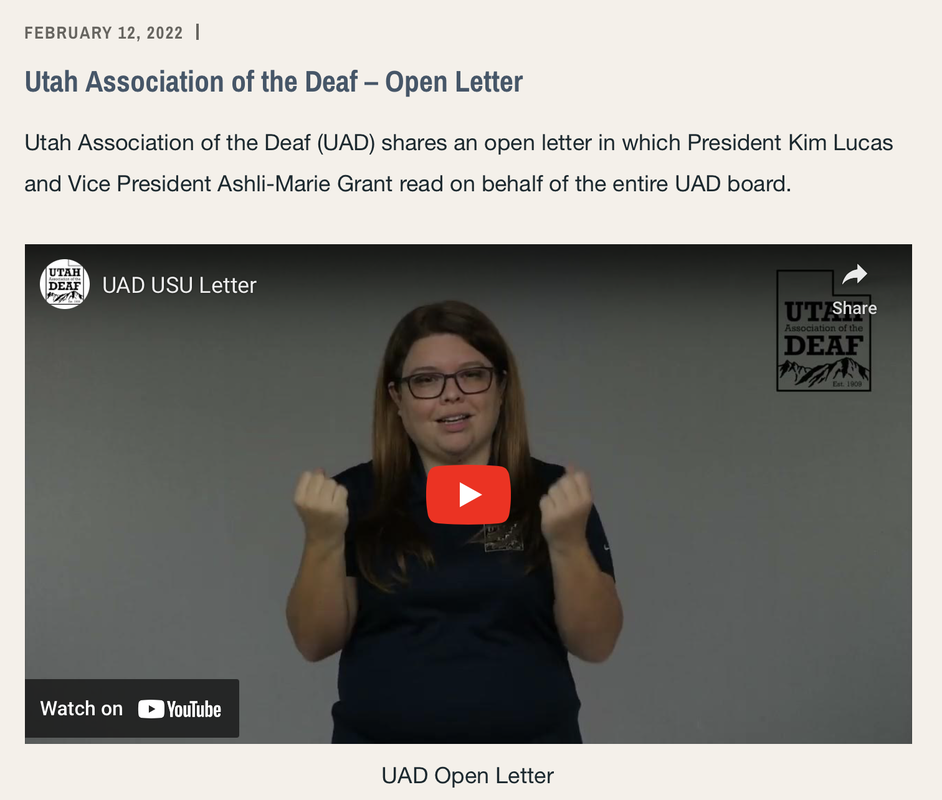
Kim Lucas, then-UAD President, and Ashli-Marie Grant, then-UAD Vice President, shared an open letter on behalf of the Utah Association of the Deaf opposing the closure of the Bilingual—Bicultural Track of USU’s Master’s Program in Communication Disorders and Deaf Education. The photo above is by Ashli-Marie Grant.
A Little Context
The Utah Association for the Deaf's legislative efforts led to the establishment of the Bilingual-Bicultural Program, formerly known as Total Communication, under the Department of Communicative Disorders at Utah State University on April 20, 1982. However, funding was not available until 1985, when Dr. Tom Clark—the hearing son of a Deaf father and the first Utah graduate of Gallaudet—and Elizabeth DeLong, the second cousin of the UAD's first female president in 1909 and the first Utah graduate of Gallaudet—designed the program. Dr. James Blair oversaw the Deaf Education teacher training program at the time (King, Save Utah State University's Bilingual Bicultural Program, February 25, 2022).
The state legislature designated Utah State University as the bilingual-bicultural approach training ground for instructors in 1990, mainly due to the efforts of Dr. Clark, a USU professor, and Dr. Robert G. Sanderson, a Utah Deaf Advocate. This designation allowed Deaf students to continue developing their language and communication skills in American Sign Language in a Deaf-friendly environment (Save Utah State University's Bilingual Bicultural Program, 2022; King, Save Utah State University's Bilingual Bicultural Program, February 25, 2022). Following Dr. Clark's retirement, Dr. Blair hired Dr. Freeman King in 1991 to teach at Utah State University. They collaborated to transform the Total Communication teacher preparation program into the ASL/English Bilingual-Bicultural program, with significant support from Utah's Deaf community and educators (King, Save Utah State University's Bilingual-Bicultural Program, February 25, 2022). Emily O'Hara Bergeson, a certified ASL interpreter and member of the Deaf community, believes that ending this program will have a huge negative impact. "It's more than just devastating," Emily explained. "This is years of work to build up this program, and now they're shutting it down, and it feels like you've just rolled a boulder up a mountain, and it's finally there, and then they shove it over the edge, and you're like, 'What?" How did that happen?" (Caldwell & Popa II, The Utah Stateman, February 9, 2022).
The state legislature designated Utah State University as the bilingual-bicultural approach training ground for instructors in 1990, mainly due to the efforts of Dr. Clark, a USU professor, and Dr. Robert G. Sanderson, a Utah Deaf Advocate. This designation allowed Deaf students to continue developing their language and communication skills in American Sign Language in a Deaf-friendly environment (Save Utah State University's Bilingual Bicultural Program, 2022; King, Save Utah State University's Bilingual Bicultural Program, February 25, 2022). Following Dr. Clark's retirement, Dr. Blair hired Dr. Freeman King in 1991 to teach at Utah State University. They collaborated to transform the Total Communication teacher preparation program into the ASL/English Bilingual-Bicultural program, with significant support from Utah's Deaf community and educators (King, Save Utah State University's Bilingual-Bicultural Program, February 25, 2022). Emily O'Hara Bergeson, a certified ASL interpreter and member of the Deaf community, believes that ending this program will have a huge negative impact. "It's more than just devastating," Emily explained. "This is years of work to build up this program, and now they're shutting it down, and it feels like you've just rolled a boulder up a mountain, and it's finally there, and then they shove it over the edge, and you're like, 'What?" How did that happen?" (Caldwell & Popa II, The Utah Stateman, February 9, 2022).
Since 2007, the Bi-Bi Program and the newly formed Listening and Spoken Language (LSL) Program have operated independently. Dr. Freeman served as Director of the Deaf Education Program at USU for 26 years. However, Dr. Kim Corbin-Lewis, Chair of the Department of Communicative Disorders and Deaf Education, removed Dr. King as Director of Deaf Education in 2017 due to philosophical differences and replaced him with Dr. Lauri Nelson, who was the Director of the Listening and Spoken Language Program at the time. Dr. King taught in the Bilingual-Bicultural Program until December 31, 2020, when he retired and was named Professor Emeritus. The relocation of his position and program positions to another teaching position remains unfilled and unreplaced (King, Save Utah State University's Bilingual Bicultural Program, February 25, 2022). In 2017, the leadership structure reorganized, giving Dr. Kim Corbin-Lewis, the LSL director, control over the Bi-Bi and LSL programs. Due to conflicting philosophies, the Bi-Bi program struggled to thrive under the new leadership structure, resulting in the closure of the Bilingual-Bicultural Deaf Education program.
Many people were surprised and confused when they learned that USU's College of Education had suspended the Bi-Bi program. The discontinuation of such an important program perplexed the ASL/Deaf community. Dereck Hooley, a member of Utah's Deaf community who grew up with teachers who graduated from USU's ASL/Bi-Bi program, credits the program with shaping him into the man he is today, saying, "We really, really cherish this program, and we recognize it as the beginning of that starting block [for Deaf students]." "So if we cut that off, the family and the community die," Hooley argues. "That's why we're fighting, to show those people on top how important it is to keep the program, and we are willing to help fix that if they're willing to listen to us" (Bress, ABC News, February 10, 2021).
Many people were surprised and confused when they learned that USU's College of Education had suspended the Bi-Bi program. The discontinuation of such an important program perplexed the ASL/Deaf community. Dereck Hooley, a member of Utah's Deaf community who grew up with teachers who graduated from USU's ASL/Bi-Bi program, credits the program with shaping him into the man he is today, saying, "We really, really cherish this program, and we recognize it as the beginning of that starting block [for Deaf students]." "So if we cut that off, the family and the community die," Hooley argues. "That's why we're fighting, to show those people on top how important it is to keep the program, and we are willing to help fix that if they're willing to listen to us" (Bress, ABC News, February 10, 2021).
Daily Moth Coverage of the Closure of the
USU's Bilingual Bicultural Deaf Education
USU's Bilingual Bicultural Deaf Education
Moving Forward
Utah State University announced in April 2022 that the Bilingual-Bicultural program would become an online bachelor's degree with a pathway to licensure (O'Hara Bergeson, Utah State University's Bilingual Bicultural Program, June 28, 2022).
Following the announcement in April of that year, Associate Superintendent Michelle Tanner of the Utah School for the Deaf met with Dr. Karen Munoz, chair of Utah State University's Communicative Disorder and Deaf Education Department, and Dr. Lauri Nelson, Director of the Deaf Education Program, during the summer to discuss the relationship between USD and USU for the reimagined Bilingual/Bicultural Deaf Education program at USU (O'Hara Bergeson, Utah State University's Bilingual Bicultural Program, August 8, 2022).
As of 2024, Utah State University's Bilingual-Bicultural Deaf Education program is working on a comprehensive bachelor's degree in Deaf Education with an ASL/English emphasis (USU Website).
Following the announcement in April of that year, Associate Superintendent Michelle Tanner of the Utah School for the Deaf met with Dr. Karen Munoz, chair of Utah State University's Communicative Disorder and Deaf Education Department, and Dr. Lauri Nelson, Director of the Deaf Education Program, during the summer to discuss the relationship between USD and USU for the reimagined Bilingual/Bicultural Deaf Education program at USU (O'Hara Bergeson, Utah State University's Bilingual Bicultural Program, August 8, 2022).
As of 2024, Utah State University's Bilingual-Bicultural Deaf Education program is working on a comprehensive bachelor's degree in Deaf Education with an ASL/English emphasis (USU Website).
The Implementation of the Hybrid Program
at the Utah School for the Deaf
at the Utah School for the Deaf
The mental trend of the "Y" system in the two-track program with prevalent oral bias persisted, preventing parents from receiving clear information about their children's educational and communication options until Joel Coleman, superintendent of Utah Schools for the Deaf and Blind, and Michelle Tanner, associate superintendent of Utah Schools for the Deaf, took action. After over fifty years of oral advocacy group dominance, starting in 1962, at the Utah School for the Deaf, Michelle Tanner, with the support of Joel Coleman, achieved a significant milestone in 2016 by eliminating and replacing the two-track program with a hybrid program in 2016, creating a more unbiased collaborative environment between the listening and spoken language and the ASL/English bilingual, or a personalized deaf education placement, which ends in 1st grade at the Utah School for the Deaf. The ultimate goal of providing education for Deaf and hard of hearing students is to ensure that parents have access to a range of options and do not feel restricted to a limited choice for their child's education. This program also eliminates the need for parents to make an 'either/or' choice between the two programs. This approach, which introduces American Sign Language (ASL) without forcing students into a placement that isn't effective, has been remarkably successful in reducing language deprivation. Michelle Tanner shared that parents are not just satisfied but thrilled that the Utah School for the Deaf team has moved away from the "Y" system approach and is now working collaboratively to meet the specific needs of each student (Michelle Tanner, personal communication, October 17, 2021). Joel and Michelle are essential administrators who have played a vital role in achieving the objectives of Dr. Jay J. Campbell and Dr. Robert G. Sanderson. Their innovative approach is crucial and brings hope for unbiased and equal information. They have shown great support and bravery in improving the system for all parties involved, and their joint efforts have marked a significant step forward in the pursuit of a more inclusive educational system.
"History happens twice because people
don’t listen at the first time."
~http://www.coolnsmart.com~
don’t listen at the first time."
~http://www.coolnsmart.com~
Notes
Dr. Jay J. Campbell, personal communication, July 1, 2007.
D.T. personal communication, April 26, 2011.
Jacob Dietz, personal communication, April 21, 2011.
James Smith, personal communication, August 19, 2014.
Kristi Mortensen, personal communication, June 26, 2009.
Marvin Miller, personal communication, July 15, 2011
Steven W. Noyce, personal communication, March 12, 2010.
Timothy Chevalier, personal communication, June 6, 2011.
Ursula Schultz, personal communication, February 12, 2012.
D.T. personal communication, April 26, 2011.
Jacob Dietz, personal communication, April 21, 2011.
James Smith, personal communication, August 19, 2014.
Kristi Mortensen, personal communication, June 26, 2009.
Marvin Miller, personal communication, July 15, 2011
Steven W. Noyce, personal communication, March 12, 2010.
Timothy Chevalier, personal communication, June 6, 2011.
Ursula Schultz, personal communication, February 12, 2012.
References
Abenchuchan, Alex. "Recap of ACLU-DE complaint and Deaf community pushback." The Daily Moth: Deaf News, January 10, 2024.
Baldwin, Stephen C. “Mainstreaming in retrospect: A Deaf Perception.” National Association of the Deaf (1990): 14-16.
Bitter, Grant B. “Summary Report for Tenure.” Grant B. Bitter Papers, Accn #1072. Manuscripts Division, J. Willard Marriott Library, University of Utah, Salt Lake City, Utah, 1985.
Bress, Sophie. "'If we cut it off, the community dies:' USU suspends Utah's only ASL education program indefinitely, devastating students, Deaf community." ABC 4 News, February 10, 2022. https://www.abc4.com/news/digital-exclusives/if-we-cut-it-off-the-community-dies-usu-suspends-utahs-only-asl-education-program-indefinitely-devastating-students-deaf-community/
“CAD and SB 210 Senate Bill.” Deaf Nation, 2015. http://deafnation.com/news/cad-and-sb-210-senate-bill/
Caldwell Jacee & Popa II Michael. "Suspension of Deaf Education program leaves members of the Deaf community upset." The Utah Stateman, February 7, 2022, p. 8-10.
Caldwell Jacee & Popa II Michael. "Suspension of Deaf Education program leaves members of the Deaf community upset." The Utah Stateman, February 9, 2022. https://usustatesman.com/suspension-of-deaf-education-program-leaves-members-of-the-deaf-community-upset/
Campbell, Jay J. Education of the Deaf in Utah: A Comprehensive Study. Utah State Board of Education. Office of Administration and Institution Services, February 15, 1977.
Clark, Keven & Riker, Tim. “Tony Mendoza Califonia Eugenices-Style Bill Creates Uproars Among the Deaf Community.” The Cutting Edge, June 7, 2010. http://www.speroforum.com/a/34359/California-EugenicsStyle-Bill-Creates-Uproar-Among-the-Deaf-Community#.VruQCLyzVsM
Cummins, John. “Deaf Education Methods Best Served by ‘Re-Channeling Energy.’” The Salt Lake Tribune, April 15, 1977.
"Deaf & Hard of Hearing Education." ACLU-Delaware, December 20, 2023. https://www.aclu-de.org/sites/default/files/field_documents/ddoe_ocr_complaint_12.20.23__0.pdf
"Deaf & Hard of Hearing Education. "ACLU-Delaware, December 27, 2023. https://www.aclu-de.org/en/press-releases/under-review
DiMarco, Nyle. The Nyle DiMarco Foundation, August 18, 2016.
“Education of Deaf Stirs Debate; No Action Taken.” Ogden Standard-Examiner, April 15, 1977.
Graney, Sharon. “Where Does Speech Fit In? Spoken English in a Bilingual Context.” Laurent Clerc National Deaf Education Center, Gallaudet University, 1997.
Indiana School for the Deaf. 6News. June 7, 2011.
“In the News: Hands Waving Legislation.” The Endeavor, Fall 2015, p. 15.
King, Freeman. "Rebuttal to Program Closure by Dr. Freeman King." Save Utah State University's Bilingual Bicultural Program, February 25, 2022. https://hellobibi.org/blog/
Lambert, Karen. “Sound Beginnings.” Ogden Standard-Examiner, 1A & 4A, July 23, 2007.
Lambert, Karen. “Cochlear implants controversial, require long thought by parents.” Ogden Standard-Examiner, 4A, July 23, 2007.
"Latest Updates." Save Utah State University's Bilingual Bicultural Program, February 21, 2022. https://hellobibi.org/blog/
Lowell, Jessica. "Utah State University announces bilingual-bicultural program closure." KSL News Radio: 102.7 FM. https://kslnewsradio.com/1963796/utah-state-university-announces-bilingual-bicultural-program-closure/
National Center for Hearing Assessment and Management, Wikipedia.
O'Hara Bergeson, Emily. "Summary of the Meeting with the Dean." Save Utah State Bilingual-Bicultural Program, February 24, 2022. https://hellobibi.org/2022/02/24/summary-of-the-meeting-with-the-dean/
O'Hara, Bronwyn. "Faces of the Movement." Save Utah State University's Bilingual Bicultural Program, March 10, 2022. https://hellobibi.org/blog/
O'Hara Bergeson, Emily. "Updates - June 2022." Utah State University's Bilingual Bicultural Program, June 28, 2022. https://hellobibi.org/blog/
O'Hara Bergeson, Emily. "Update - August 2022." Utah State University's Bilingual Bicultural Program, August 8, 2022. https://hellobibi.org/blog/
O'Hara Bergeson, Emily. "What Happened." Utah State University's Bilingual Bicultural Program, 2022. https://hellobibi.org/what-happened-and-a-little-context/
Parker Maggie. "Actress Millicent Simmonds's Mission to Smash a Problematic Norm for Deaf Children and Hearing Parents." Katie Couric Media, May 5, 2022. https://katiecouric.com/entertainment/movies-tv/millicent-simmonds-mom-sign-language/
Peters, Collen. State Will be Back Logan Schools. Deseret News, April 15, 1977.
"Position paper #2: Expanding Options for Early Deaf Education in Delaware-The Solution." https://hearingchoicesdelaware.com/position-papers/
“Senate Bill No. 210.” California Legislative Information, October 8, 2015. http://leginfo.legislature.ca.gov/faces/billNavClient.xhtml?bill_id=201520160SB210
Smith, Al. "Announcement of Program Closure." Utah State University, February 2, 2022. https://cehs.usu.edu/news/2022/announcement-of-bibi-program-closure#:~:text=The%20bilingual%2Dbicultural%20(Bi%2D,American%20Sign%20Language%20(ASL)
Winters, Rosemary. “Utah Schools for the deaf grapple with balancing two tracks.” The Salt Lake Tribune, February 21, 2011.
Baldwin, Stephen C. “Mainstreaming in retrospect: A Deaf Perception.” National Association of the Deaf (1990): 14-16.
Bitter, Grant B. “Summary Report for Tenure.” Grant B. Bitter Papers, Accn #1072. Manuscripts Division, J. Willard Marriott Library, University of Utah, Salt Lake City, Utah, 1985.
Bress, Sophie. "'If we cut it off, the community dies:' USU suspends Utah's only ASL education program indefinitely, devastating students, Deaf community." ABC 4 News, February 10, 2022. https://www.abc4.com/news/digital-exclusives/if-we-cut-it-off-the-community-dies-usu-suspends-utahs-only-asl-education-program-indefinitely-devastating-students-deaf-community/
“CAD and SB 210 Senate Bill.” Deaf Nation, 2015. http://deafnation.com/news/cad-and-sb-210-senate-bill/
Caldwell Jacee & Popa II Michael. "Suspension of Deaf Education program leaves members of the Deaf community upset." The Utah Stateman, February 7, 2022, p. 8-10.
Caldwell Jacee & Popa II Michael. "Suspension of Deaf Education program leaves members of the Deaf community upset." The Utah Stateman, February 9, 2022. https://usustatesman.com/suspension-of-deaf-education-program-leaves-members-of-the-deaf-community-upset/
Campbell, Jay J. Education of the Deaf in Utah: A Comprehensive Study. Utah State Board of Education. Office of Administration and Institution Services, February 15, 1977.
Clark, Keven & Riker, Tim. “Tony Mendoza Califonia Eugenices-Style Bill Creates Uproars Among the Deaf Community.” The Cutting Edge, June 7, 2010. http://www.speroforum.com/a/34359/California-EugenicsStyle-Bill-Creates-Uproar-Among-the-Deaf-Community#.VruQCLyzVsM
Cummins, John. “Deaf Education Methods Best Served by ‘Re-Channeling Energy.’” The Salt Lake Tribune, April 15, 1977.
"Deaf & Hard of Hearing Education." ACLU-Delaware, December 20, 2023. https://www.aclu-de.org/sites/default/files/field_documents/ddoe_ocr_complaint_12.20.23__0.pdf
"Deaf & Hard of Hearing Education. "ACLU-Delaware, December 27, 2023. https://www.aclu-de.org/en/press-releases/under-review
DiMarco, Nyle. The Nyle DiMarco Foundation, August 18, 2016.
“Education of Deaf Stirs Debate; No Action Taken.” Ogden Standard-Examiner, April 15, 1977.
Graney, Sharon. “Where Does Speech Fit In? Spoken English in a Bilingual Context.” Laurent Clerc National Deaf Education Center, Gallaudet University, 1997.
Indiana School for the Deaf. 6News. June 7, 2011.
“In the News: Hands Waving Legislation.” The Endeavor, Fall 2015, p. 15.
King, Freeman. "Rebuttal to Program Closure by Dr. Freeman King." Save Utah State University's Bilingual Bicultural Program, February 25, 2022. https://hellobibi.org/blog/
Lambert, Karen. “Sound Beginnings.” Ogden Standard-Examiner, 1A & 4A, July 23, 2007.
Lambert, Karen. “Cochlear implants controversial, require long thought by parents.” Ogden Standard-Examiner, 4A, July 23, 2007.
"Latest Updates." Save Utah State University's Bilingual Bicultural Program, February 21, 2022. https://hellobibi.org/blog/
Lowell, Jessica. "Utah State University announces bilingual-bicultural program closure." KSL News Radio: 102.7 FM. https://kslnewsradio.com/1963796/utah-state-university-announces-bilingual-bicultural-program-closure/
National Center for Hearing Assessment and Management, Wikipedia.
O'Hara Bergeson, Emily. "Summary of the Meeting with the Dean." Save Utah State Bilingual-Bicultural Program, February 24, 2022. https://hellobibi.org/2022/02/24/summary-of-the-meeting-with-the-dean/
O'Hara, Bronwyn. "Faces of the Movement." Save Utah State University's Bilingual Bicultural Program, March 10, 2022. https://hellobibi.org/blog/
O'Hara Bergeson, Emily. "Updates - June 2022." Utah State University's Bilingual Bicultural Program, June 28, 2022. https://hellobibi.org/blog/
O'Hara Bergeson, Emily. "Update - August 2022." Utah State University's Bilingual Bicultural Program, August 8, 2022. https://hellobibi.org/blog/
O'Hara Bergeson, Emily. "What Happened." Utah State University's Bilingual Bicultural Program, 2022. https://hellobibi.org/what-happened-and-a-little-context/
Parker Maggie. "Actress Millicent Simmonds's Mission to Smash a Problematic Norm for Deaf Children and Hearing Parents." Katie Couric Media, May 5, 2022. https://katiecouric.com/entertainment/movies-tv/millicent-simmonds-mom-sign-language/
Peters, Collen. State Will be Back Logan Schools. Deseret News, April 15, 1977.
"Position paper #2: Expanding Options for Early Deaf Education in Delaware-The Solution." https://hearingchoicesdelaware.com/position-papers/
“Senate Bill No. 210.” California Legislative Information, October 8, 2015. http://leginfo.legislature.ca.gov/faces/billNavClient.xhtml?bill_id=201520160SB210
Smith, Al. "Announcement of Program Closure." Utah State University, February 2, 2022. https://cehs.usu.edu/news/2022/announcement-of-bibi-program-closure#:~:text=The%20bilingual%2Dbicultural%20(Bi%2D,American%20Sign%20Language%20(ASL)
Winters, Rosemary. “Utah Schools for the deaf grapple with balancing two tracks.” The Salt Lake Tribune, February 21, 2011.



